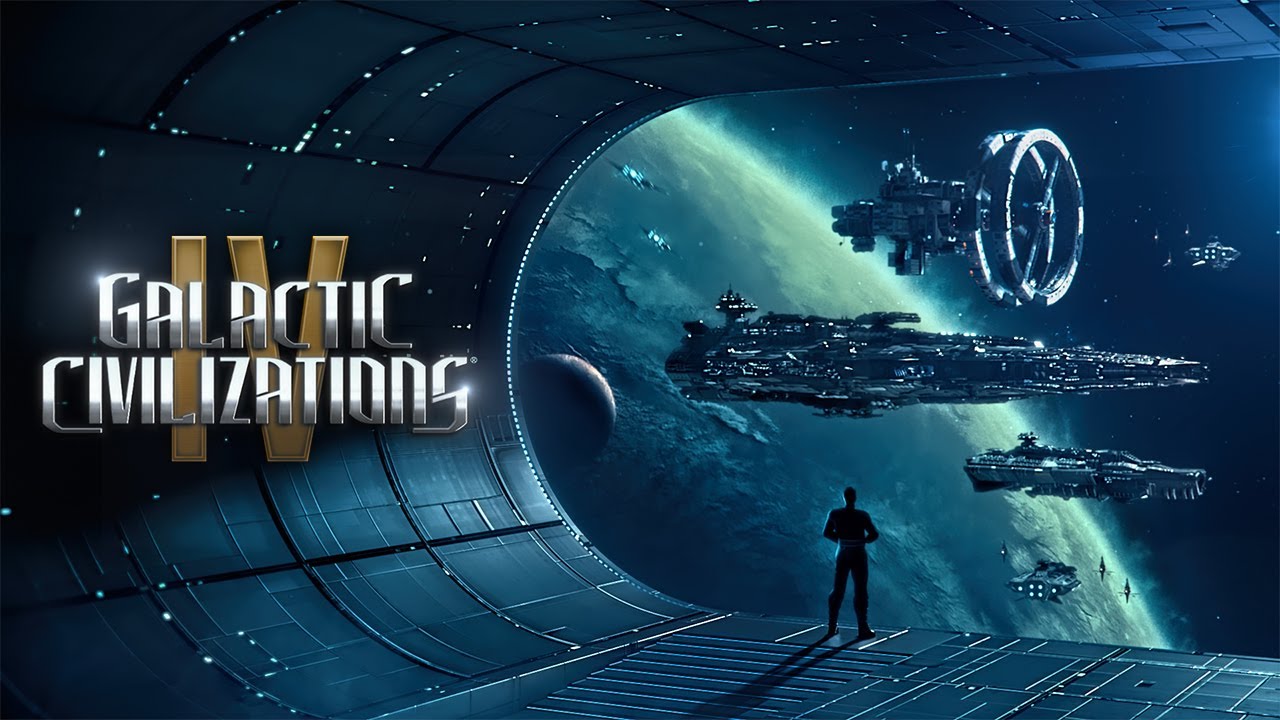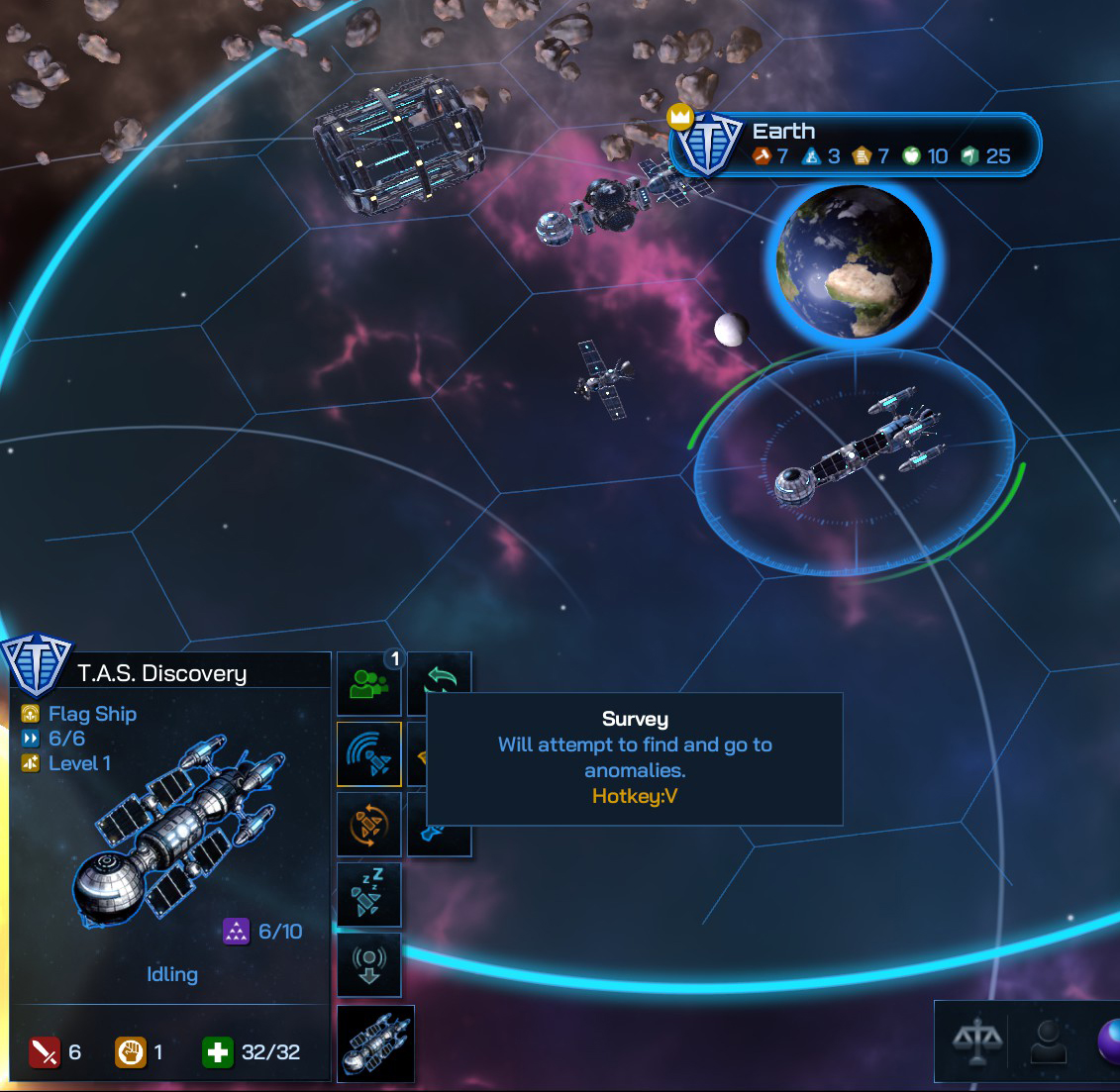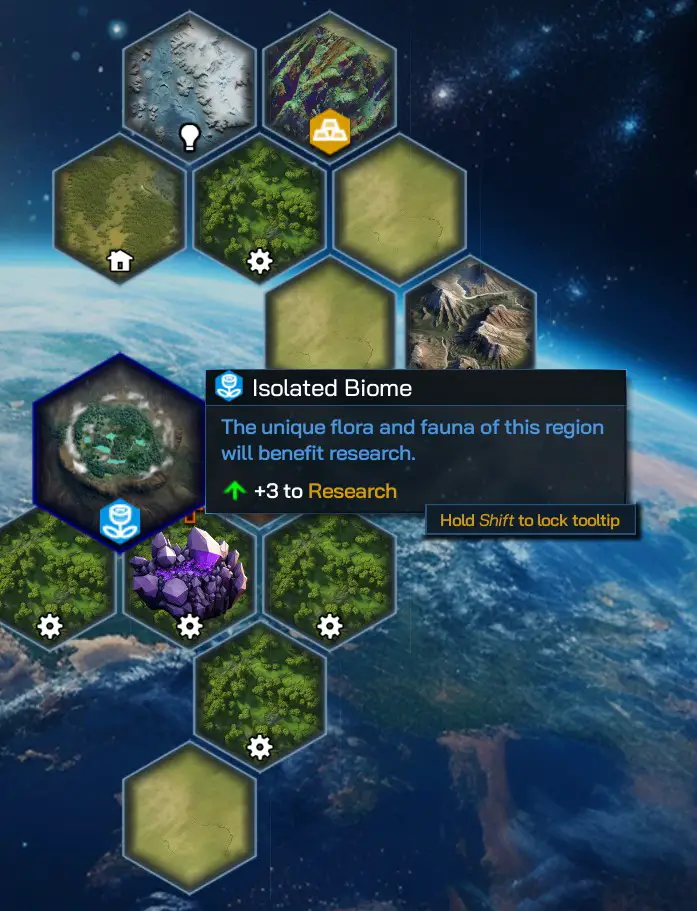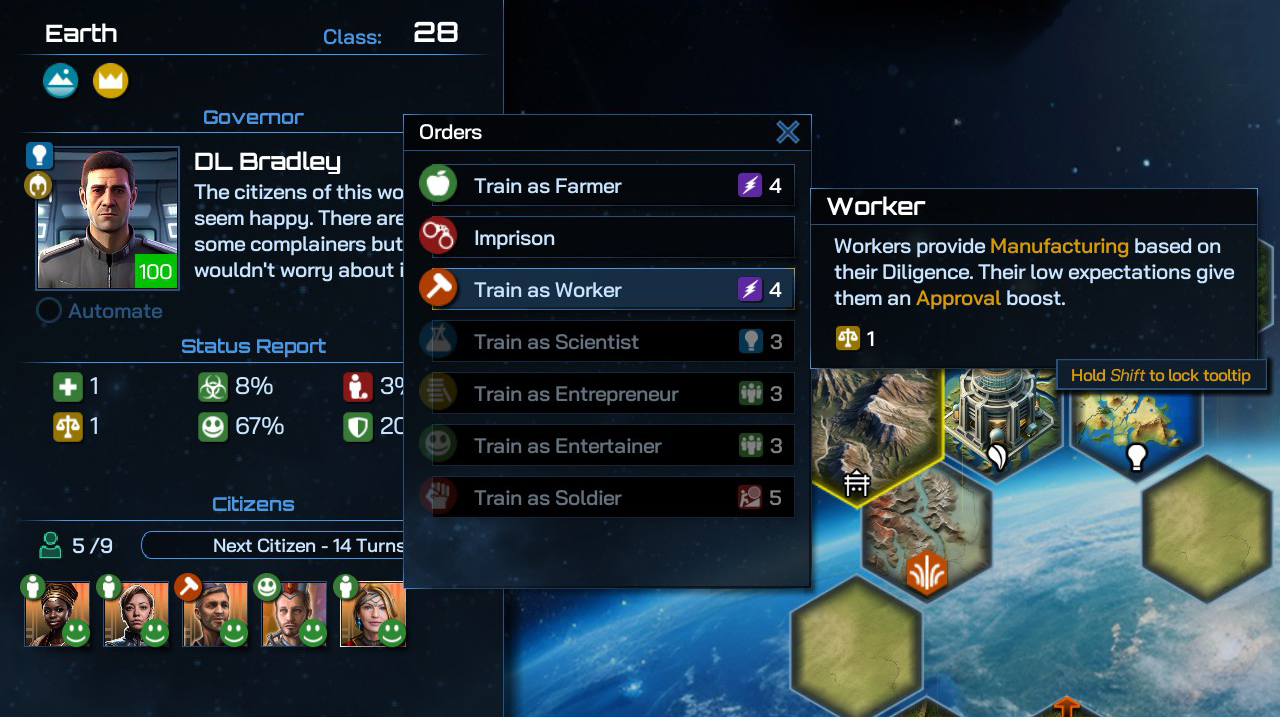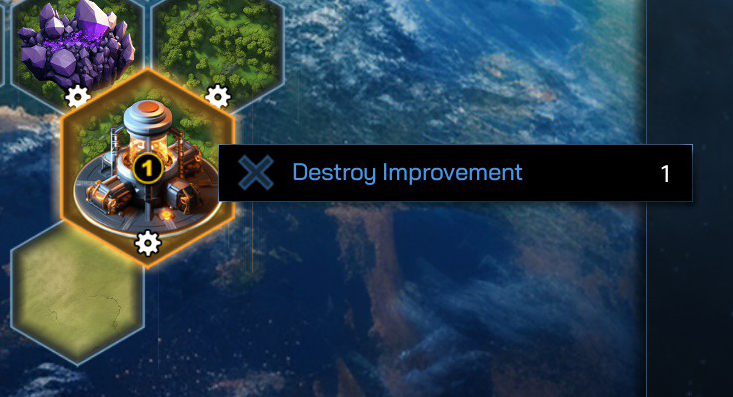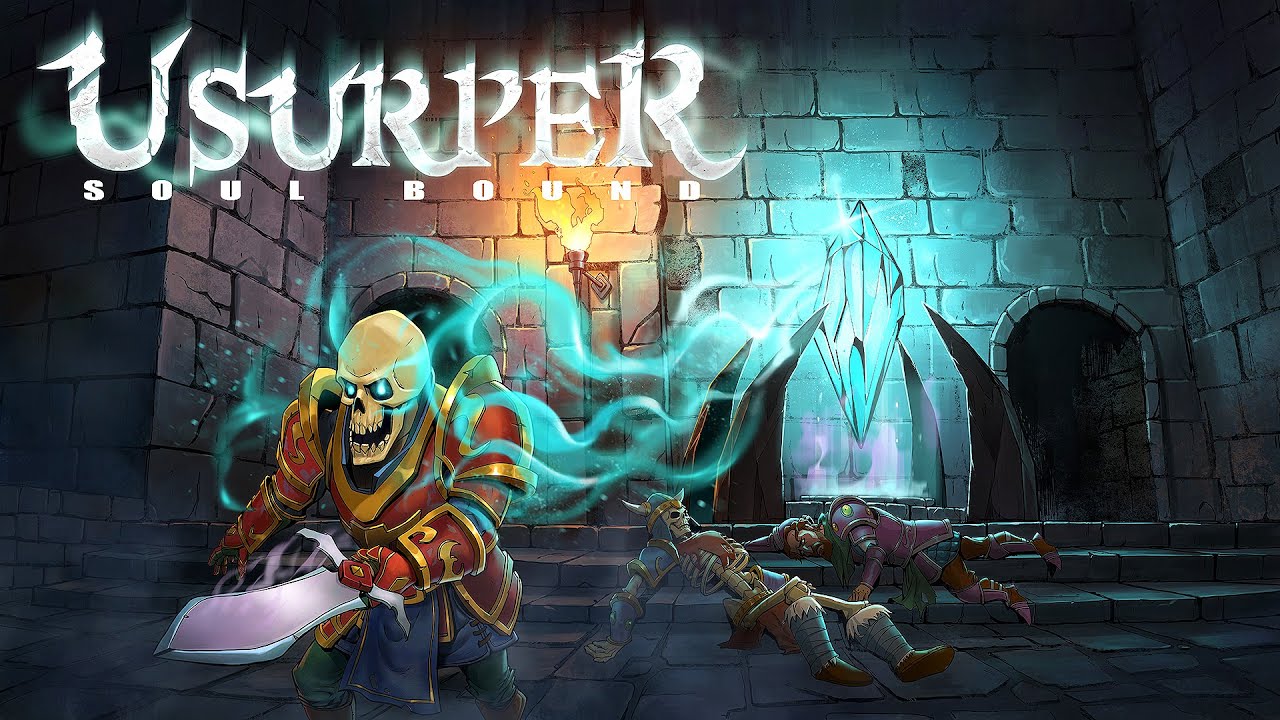This walkthrough will guide you through the initial 10 turns of Galactic Civilizations IV, providing comprehensive assistance for newcomers aiming to maximize their experience in this intricate space strategy game. Upon embarking on your Galactic Civilizations IV journey, you might be seeking more nuanced guidance beyond the in-game tutorial. In this walkthrough, we will delve into the course of a standard game, elucidating the key actions for the initial 10 turns.
New Game
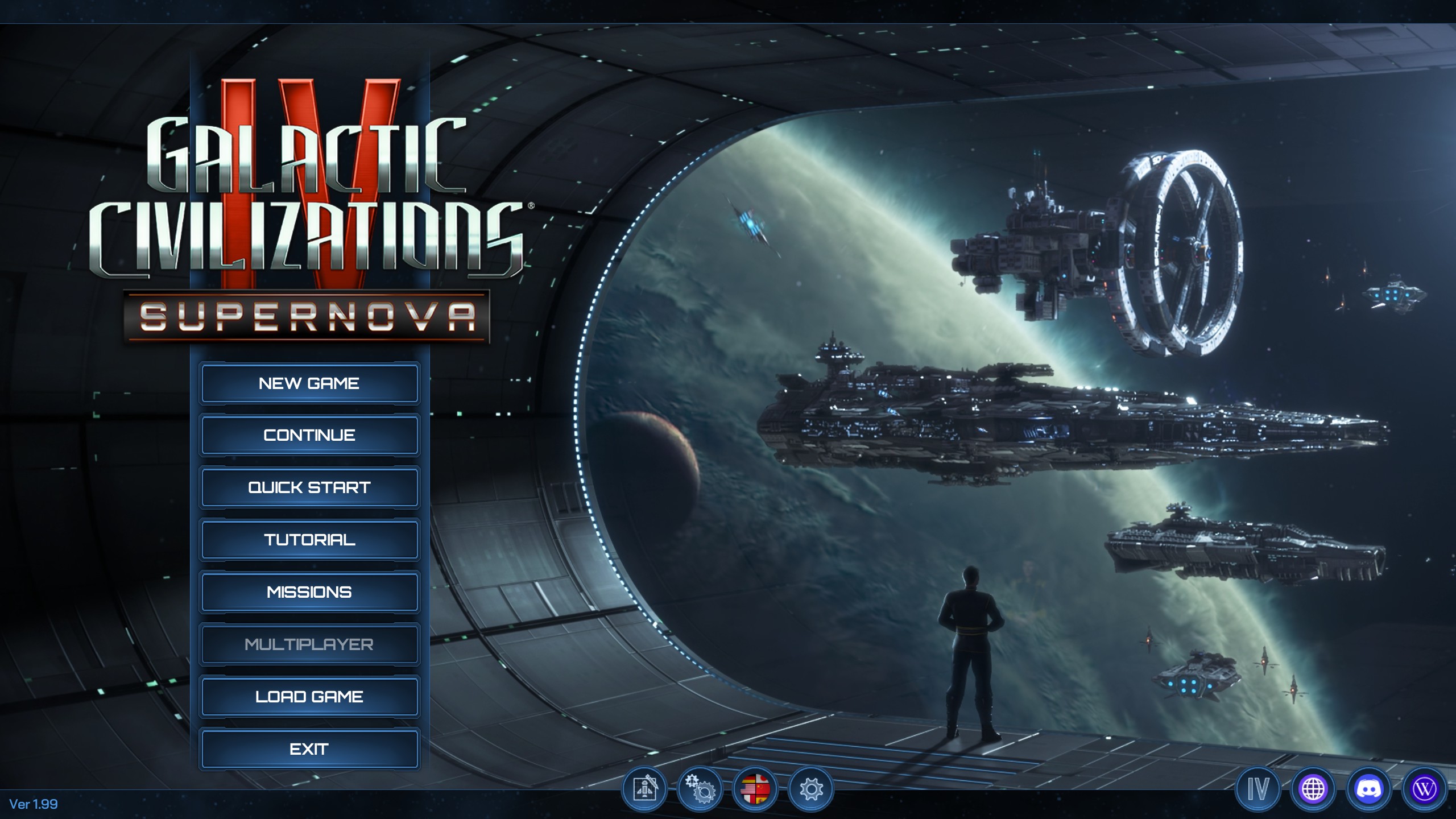
For our purposes, we are going to do a normal game. To choose that, click on New Game.
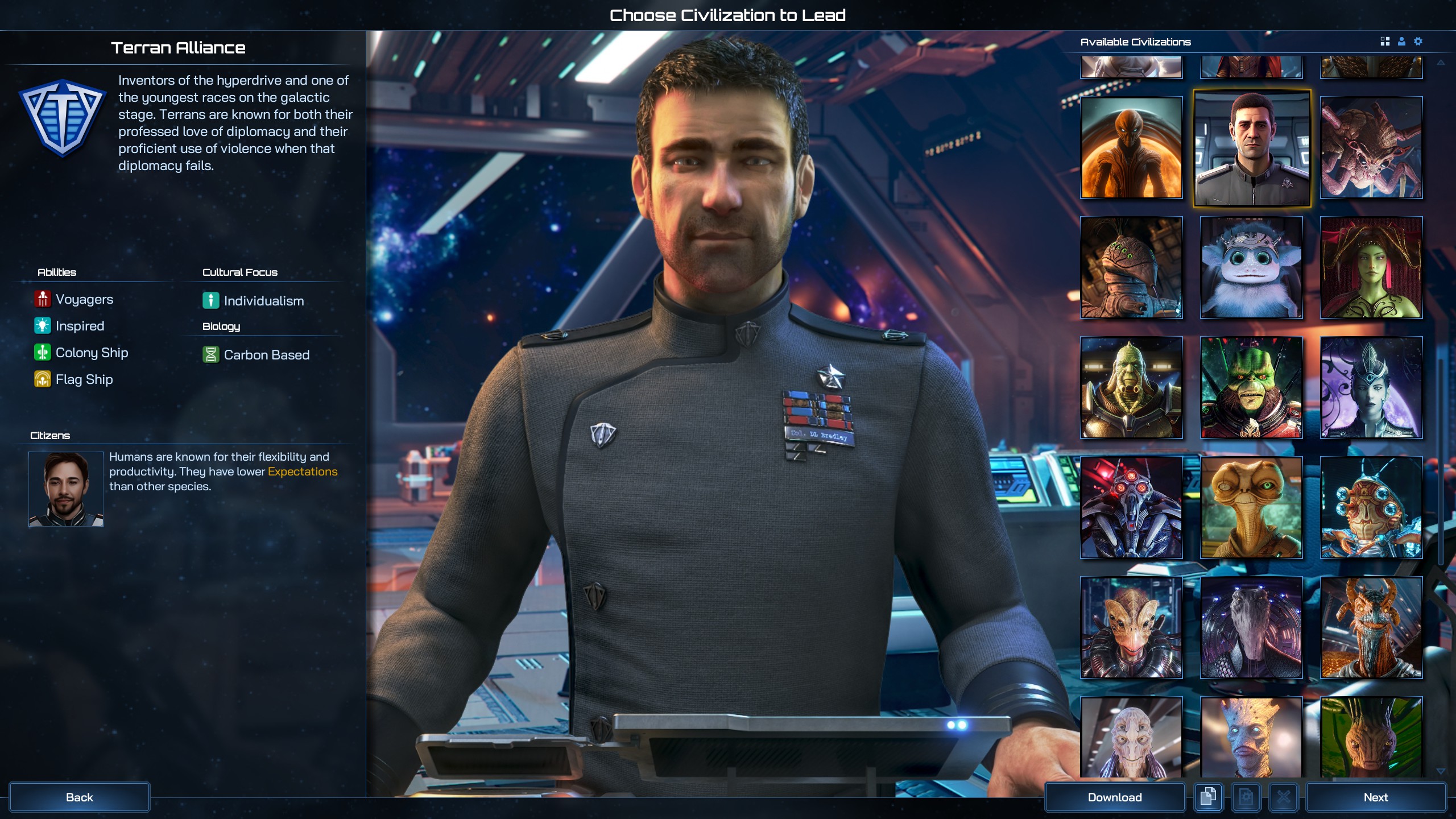
Your first game shouldn’t be fancy. Play as the Terran Alliance. These are the humans of Earth. There’s no need to get into too much detail about them but they’re a bipedal race of hairless apes on Sol III. They’re the “easy” civ.
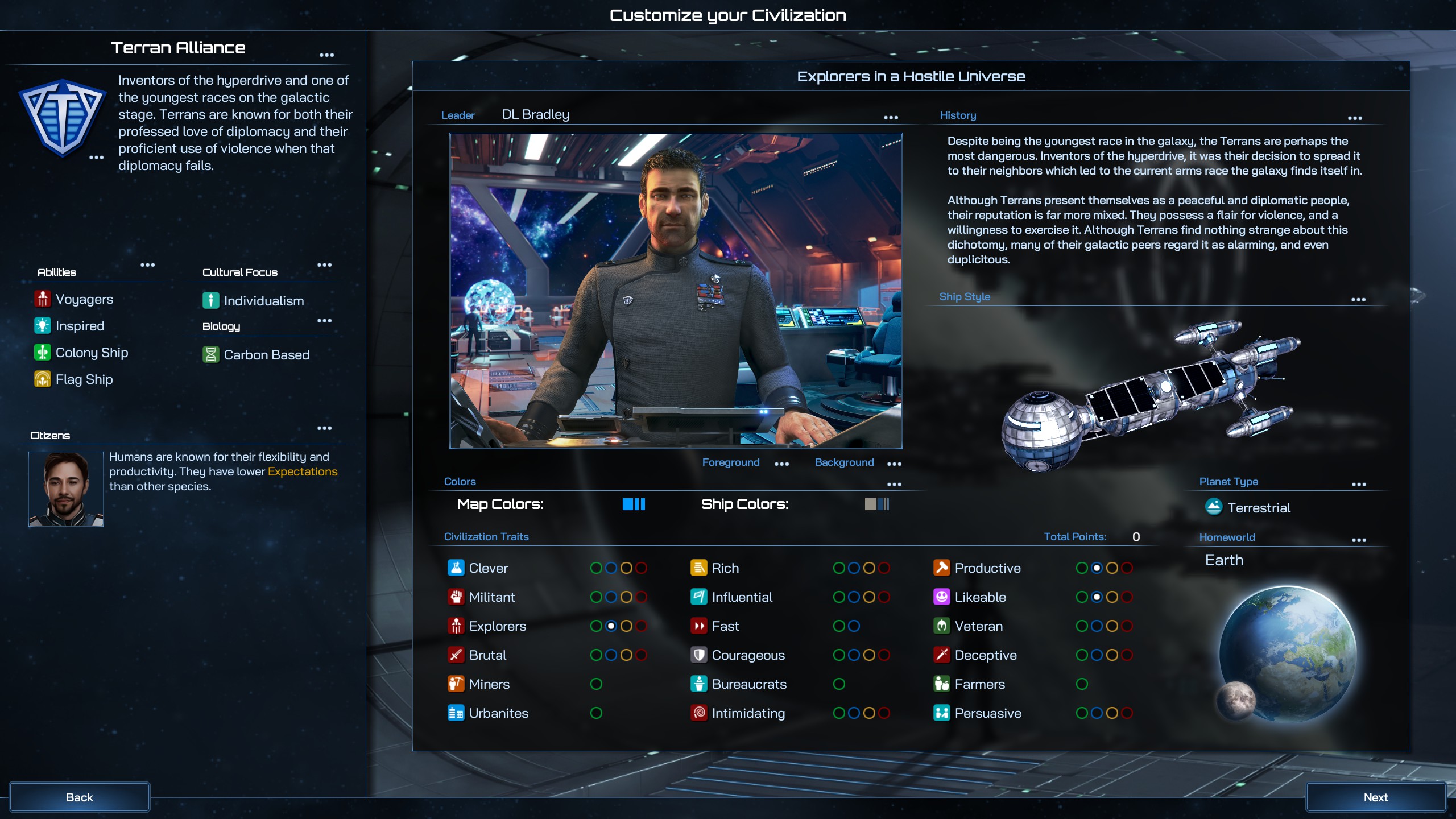
The defaults for them are fine. Humans are…well they’re fine. Not great not terrible.
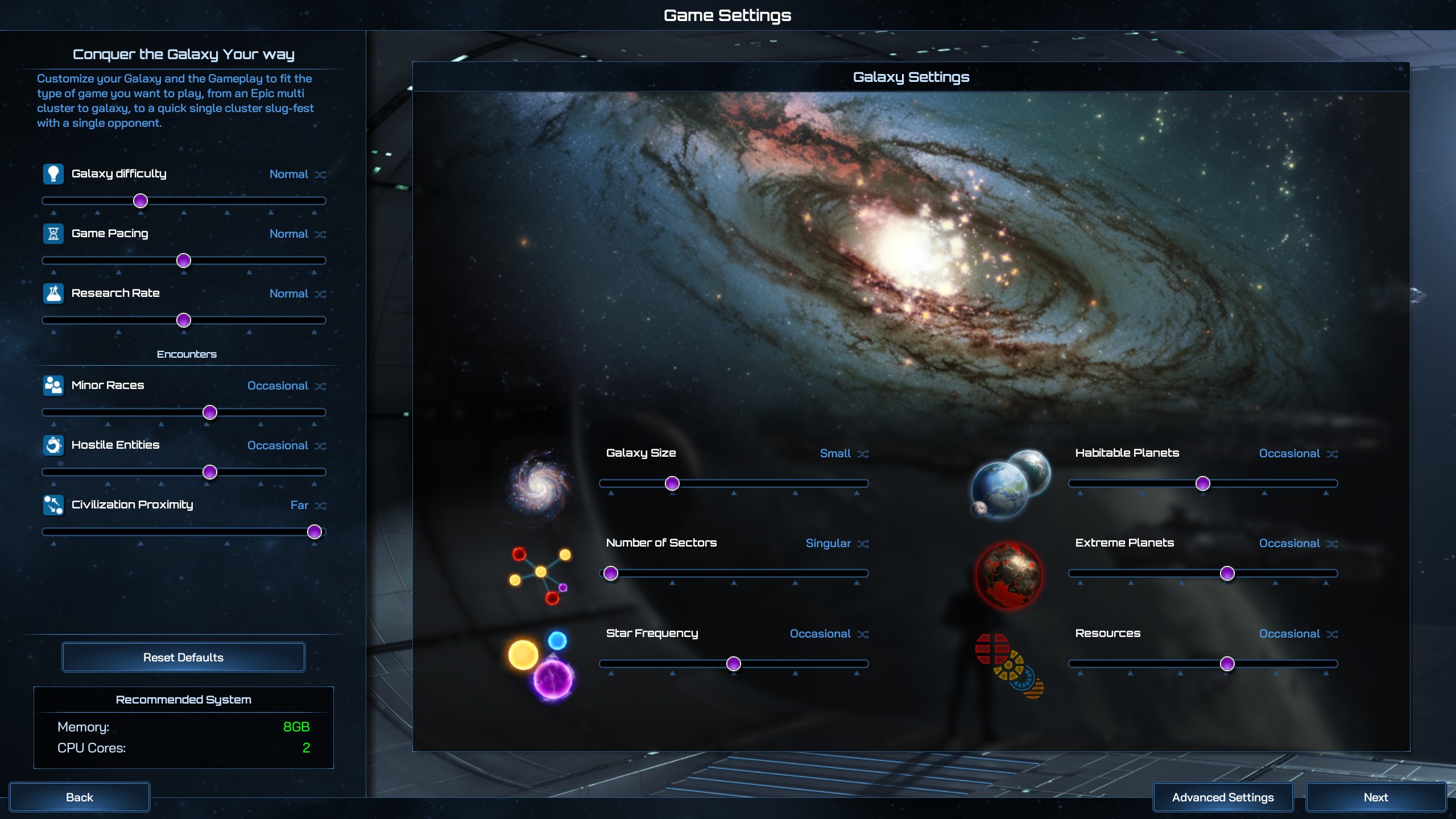
For the map setup, keep all the defaults but change the number of sectors to singular (that means one) to keep things as simple as we can.
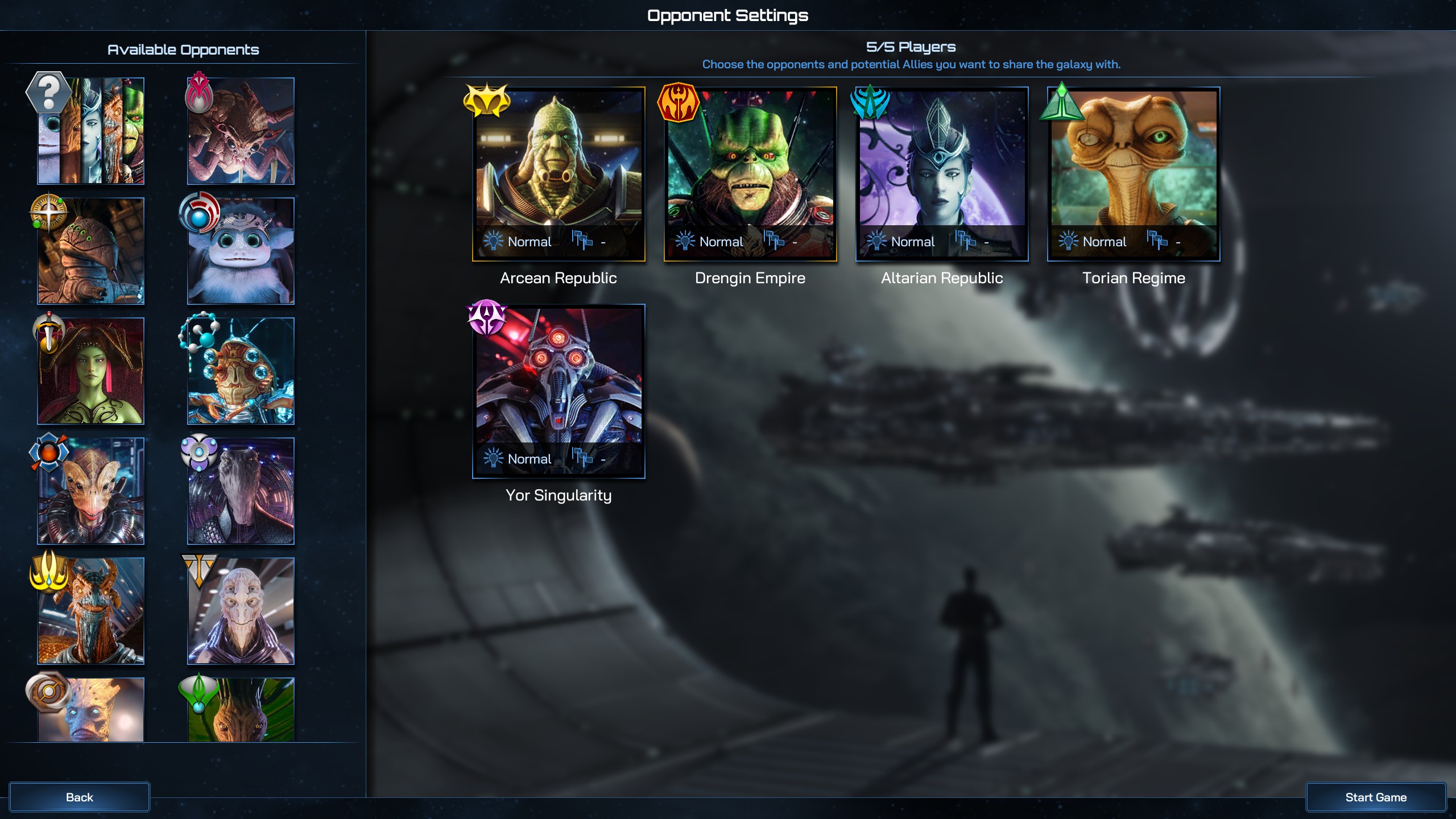
For opponents it doesn’t really matter too much for our purpose here. However, your choice in opponents will affect the game a lot. You have a bunch of tree hugging space alien hippies and have a pretty boring game. Or you can have a bunch of blood thirsty monsters and it’ll be constant war. A hero (that would be you) is only as good as their villains.
Turn 1
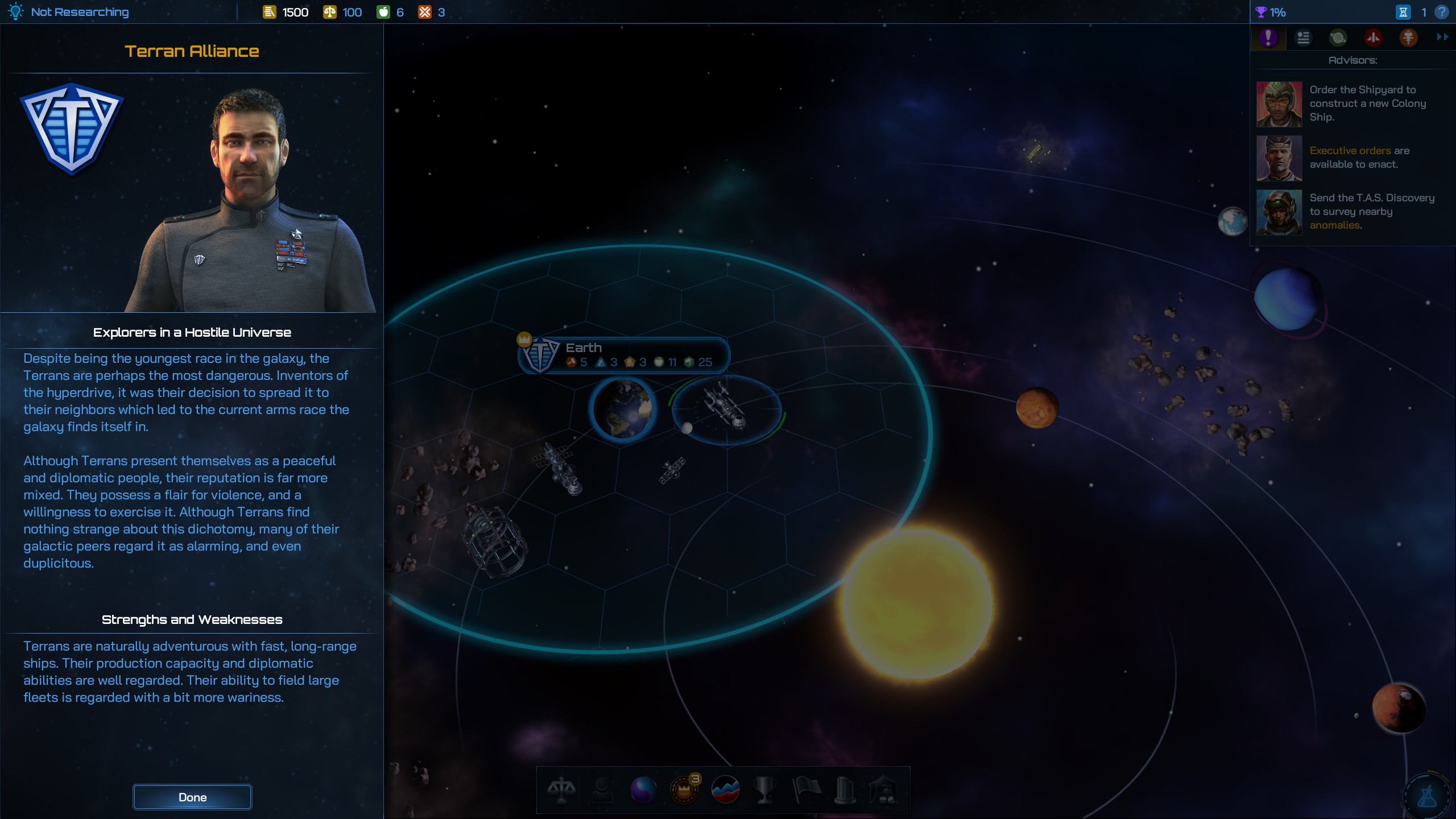
Now that you’re in the game you will get bombarded with a bunch of information. So we’ll try our best to make this as easy as we can.
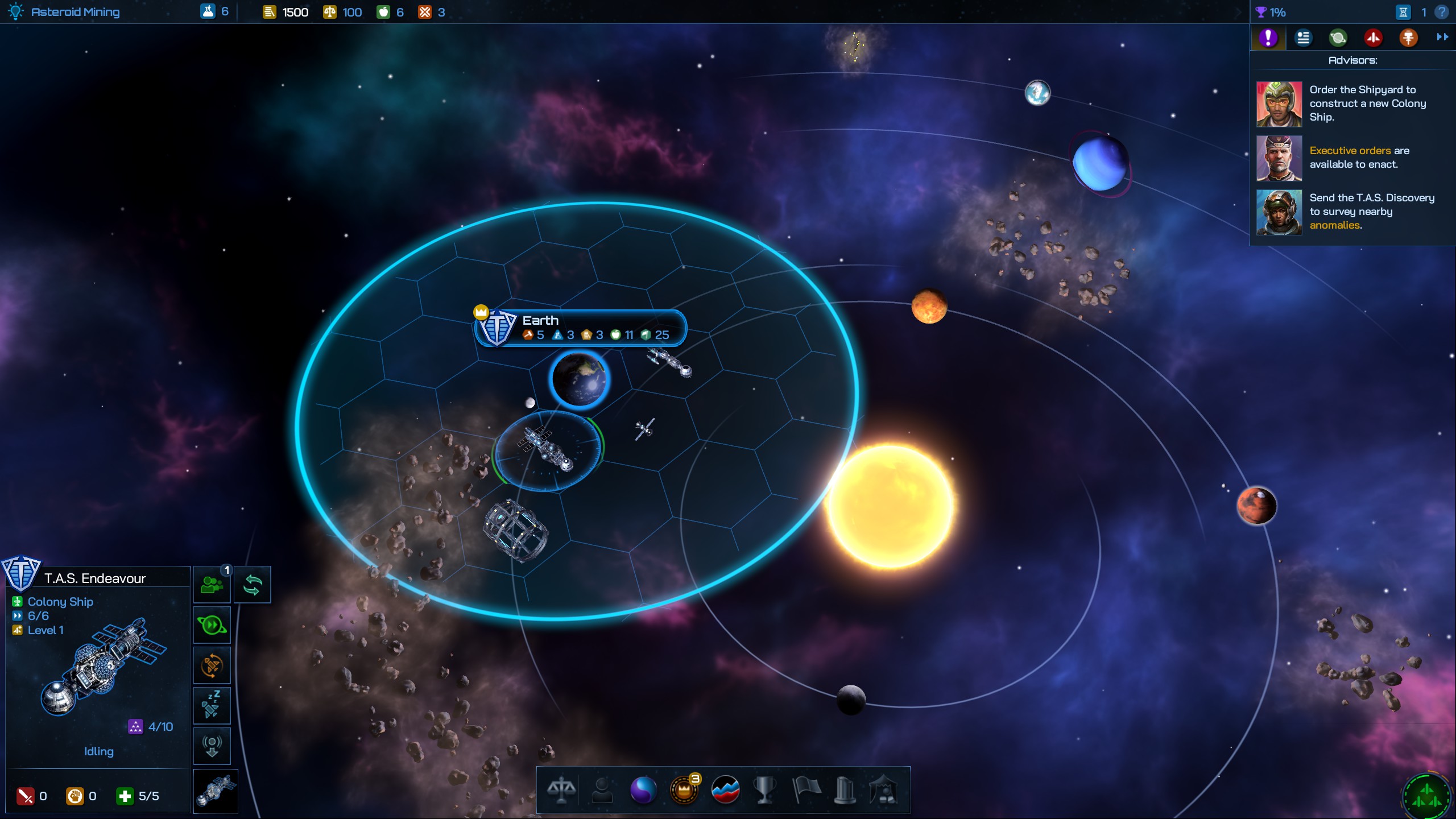
Let’s start out with your ships. You can LEFT click on them to select. LEFT DOUBLE CLICK on them to get more info on them (Double clicking is your path to many abilities, some considered unnatural).
RIGHT-clicking will send a ship to a destination.
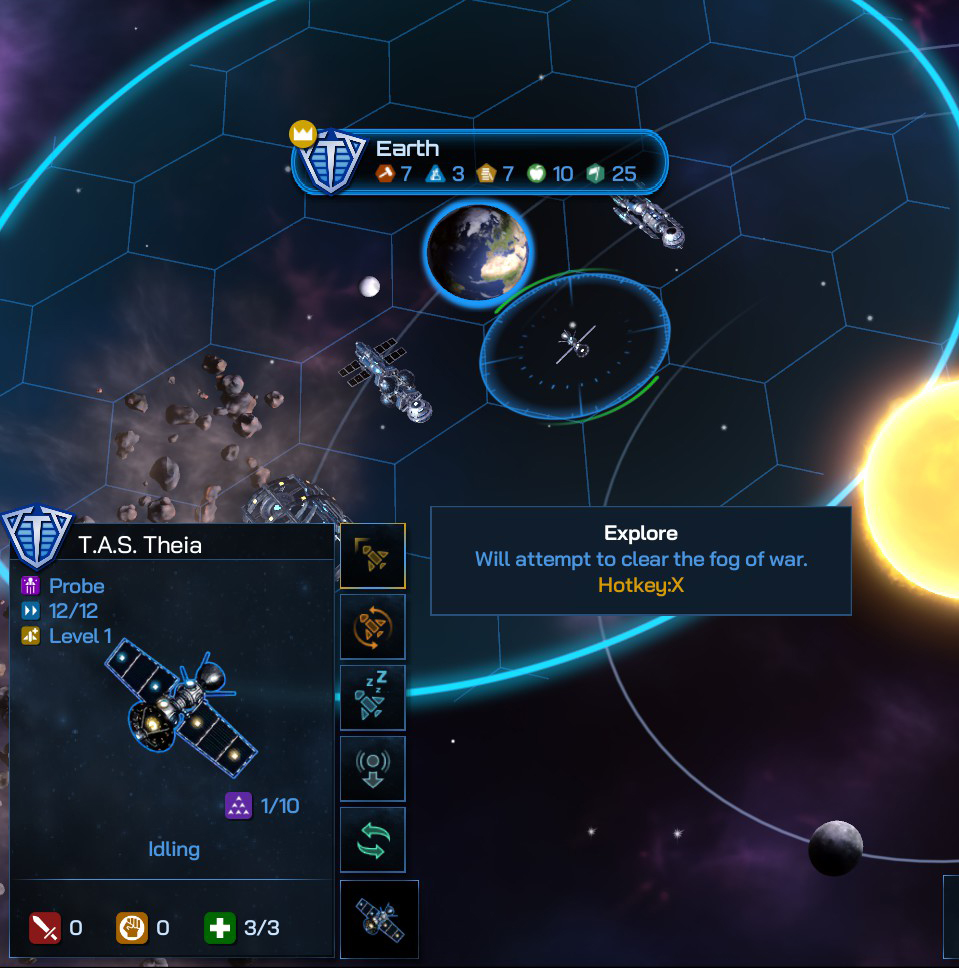
Your probe has unlimited range. You can set it to auto explore.
This is your flagship. These are often called Survey Ships or Science Vessels (first introduced into GalCiv I back in 2003). They go out and explore strange new things. In GalCiv IV you can’t just build as many of these as you want because the anomalies are now much more powerful. But through tech and other means you will soon have more than you’d ever thought you’d want.
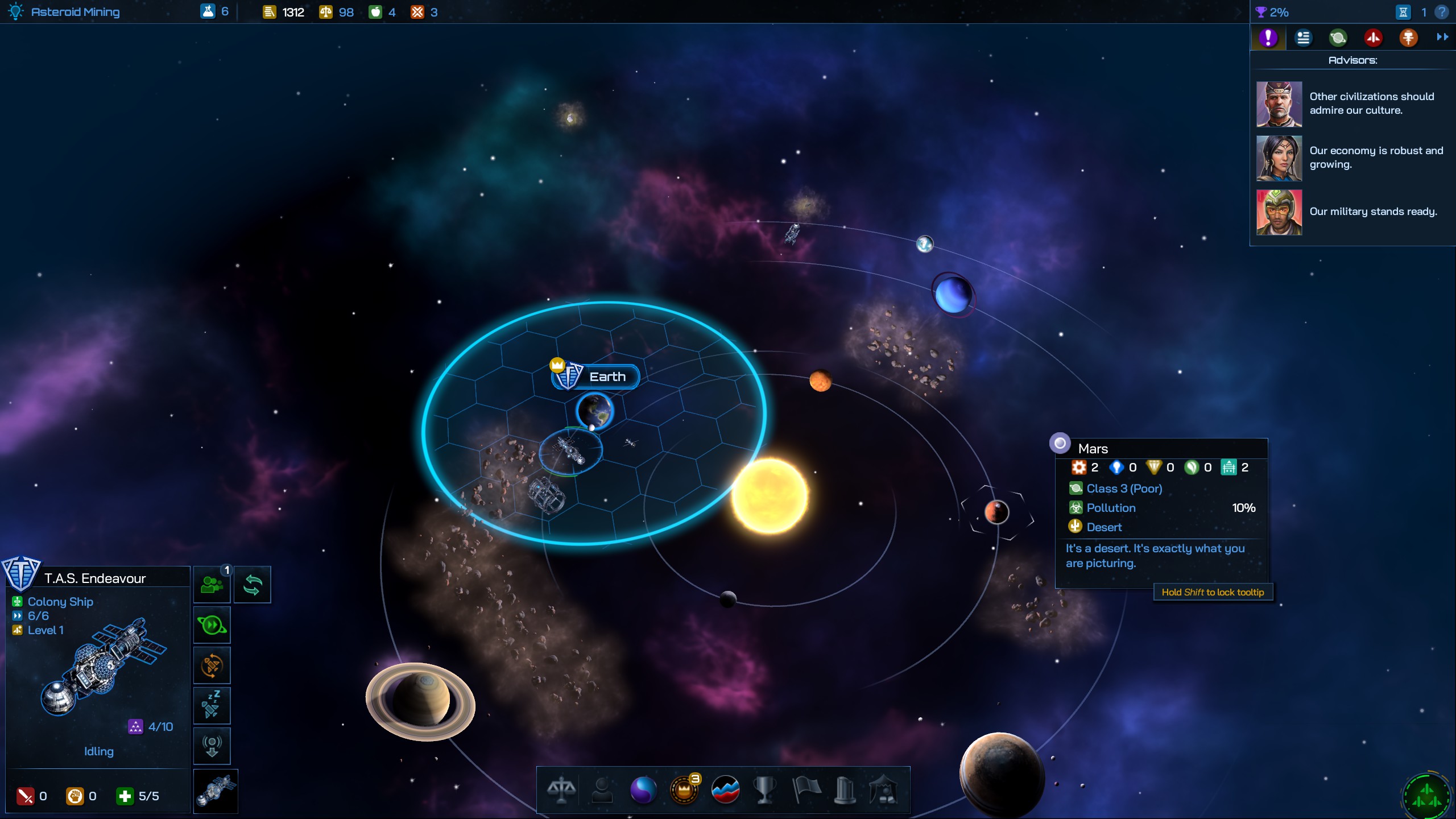
Nearby is Mars. It’s not great. But it’s close. Send your colony ship here.
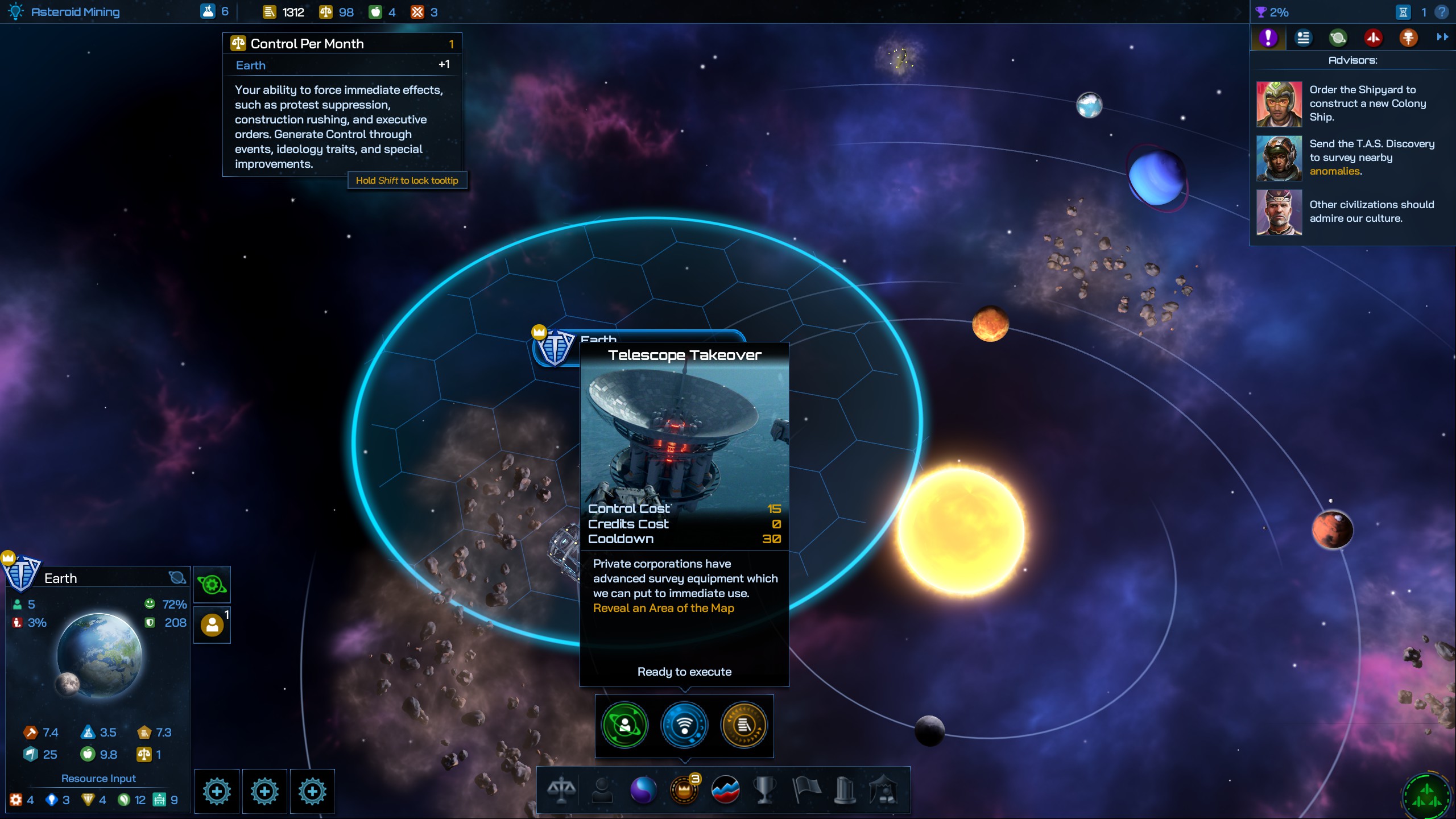
These are your Executive Orders. Each turn you generate control which helps you make use of these. These let you instantly do something in the world.
So far so good. You’re doing great!
The Planet Screen
This is where things seem complicated. If we were smarter, which we’re not, we would have a bunch of tabs to make this screen easier to digest. However, once you get used to it, you’ll see why we avoided adding tabs. Having everything here is just so convenient.
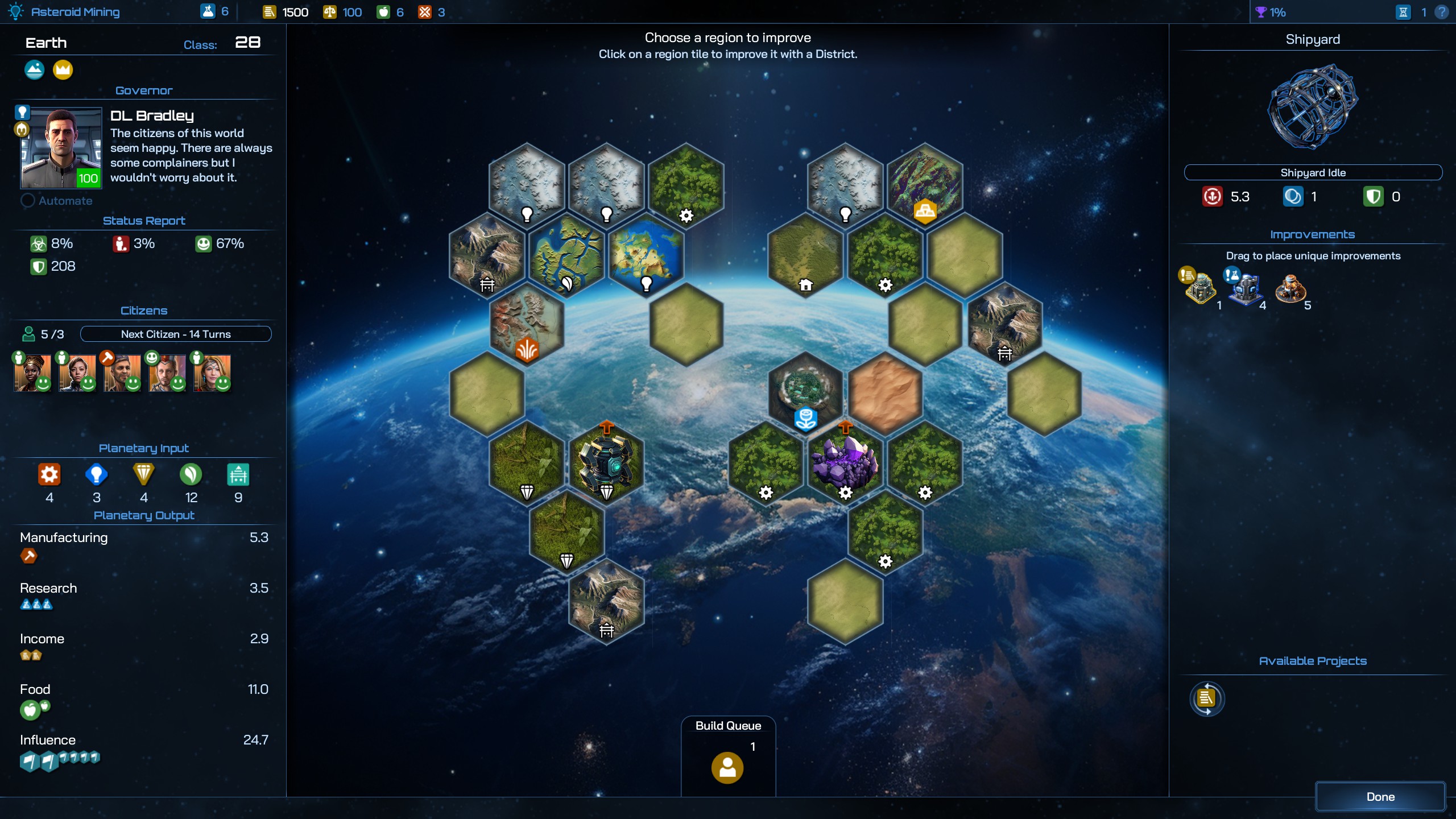
The shape of the continental landmasses is vaguely represented as hex regions. Except for Australia. They didn’t send enough bribes to get on here.
Planets have various inputs. Those inputs then are used by the citizens of the planets who are empowered by the planetary improvements you construct to turn them into outputs that your civilization can use.
Some regions have special bonuses on them. If you put something of the same type onto that region it will level it up which will make it perform better.
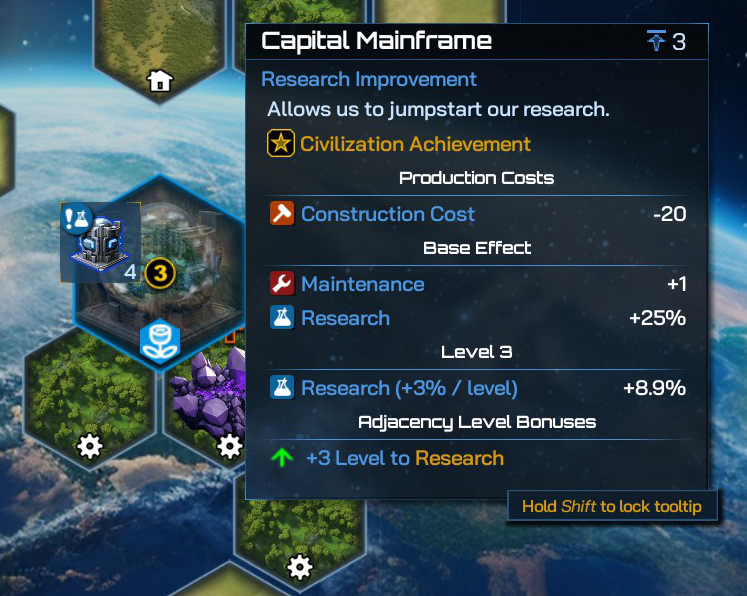
So if you drag a Research improvement on to a tile with a +3 research modifier you will see the 3 appear just before you drop it onto that tile. Going up 3 levels in this example results in nearly 9% more research occurring on your planet as a result. You can also see that this structure will give adjacent tiles a +3 to their research level if you place an improvement (or build a district) that is of the same kind.
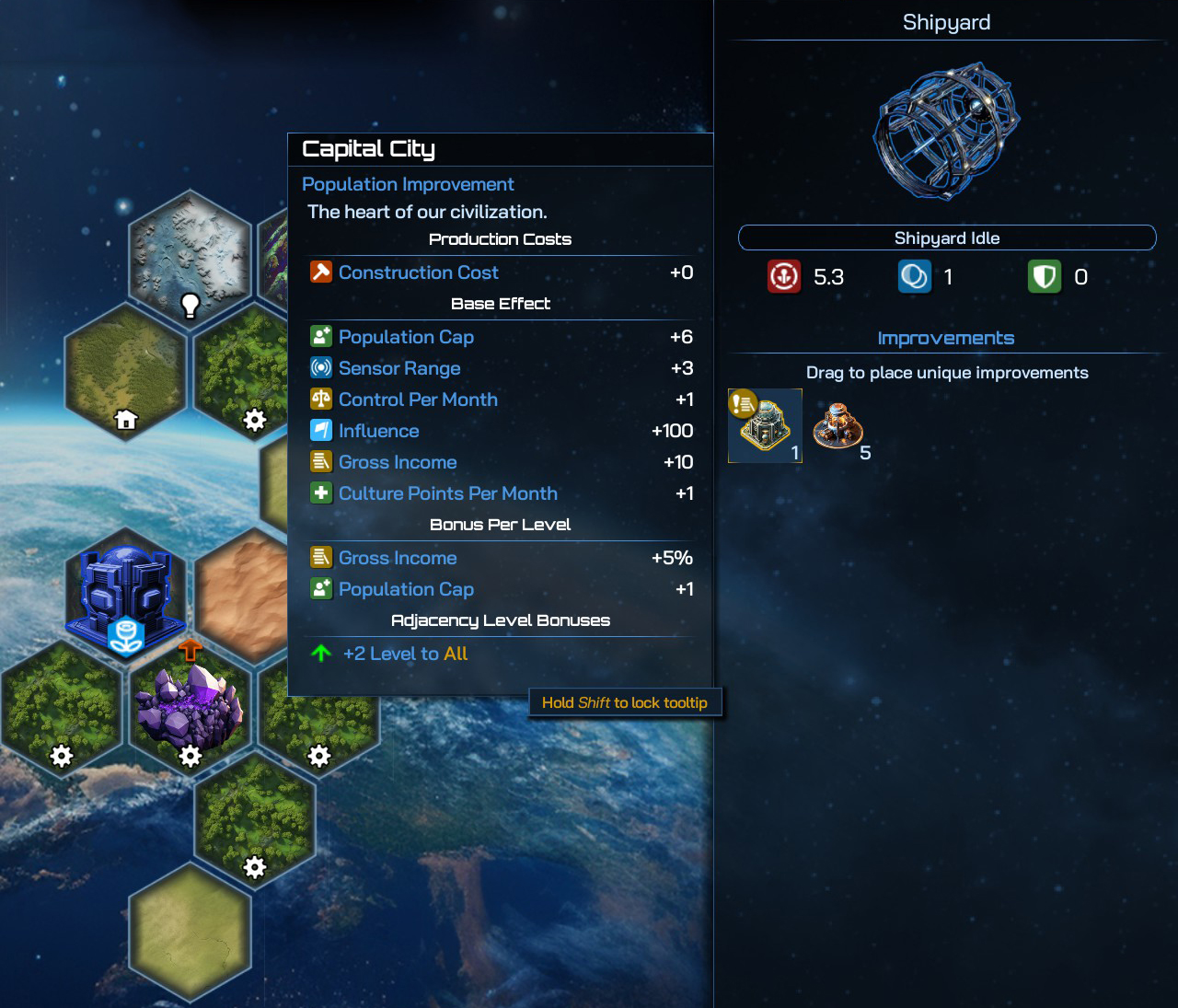
You will also want to place your capital city. The capital city and later colonial capitals don’t cost anything to build and show up instantly so you don’t have to wait – unless you play as a Ravenous species they don’t get this benefit.
Planet Stats
Now let’s look at the planet stats.
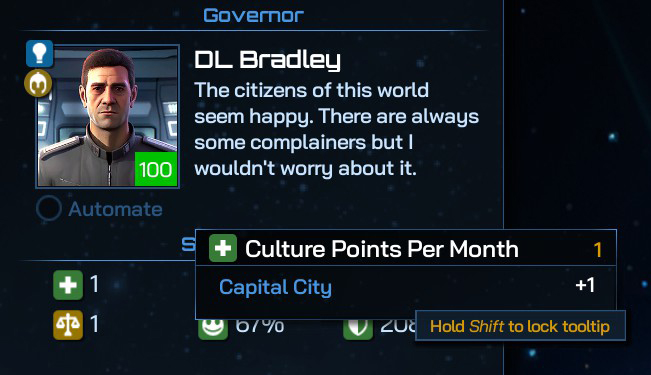
Every turn your capital city will generate a culture point. Culture points are used to progress in culture later in the game. Only your home world generates these (in general – sorry Festron).
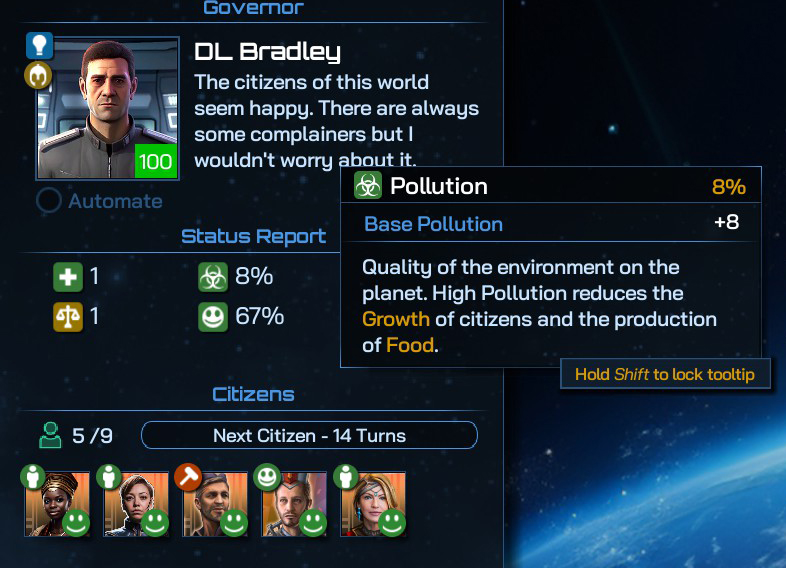
Pollution reduces the food output of the planet. You need food for your population to grow.
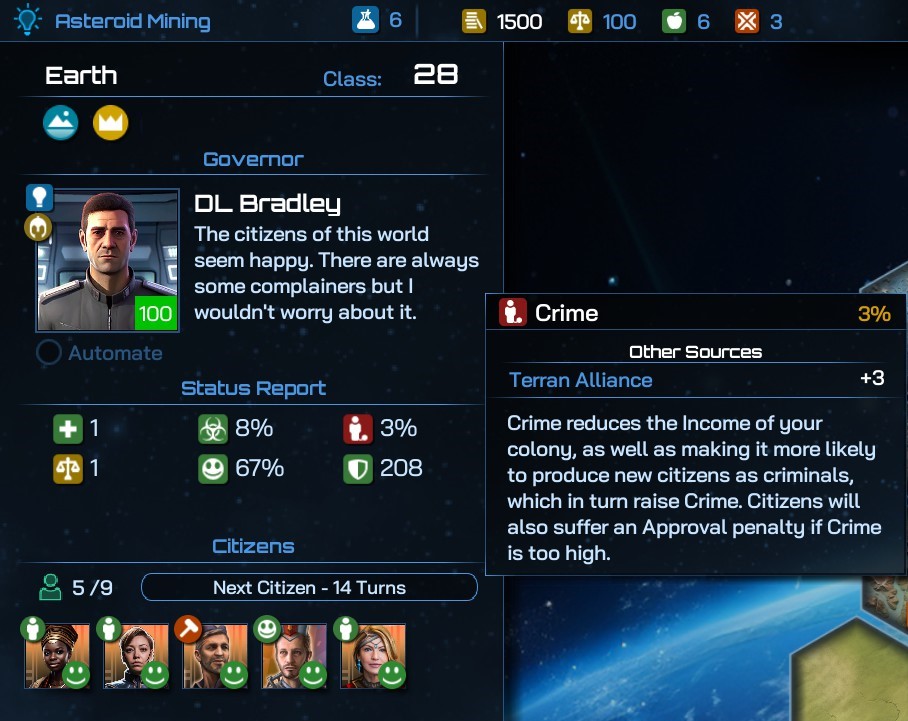
Crime is generated from a variety of sources. Sometimes you will have actual criminals as citizens and if that’s the case you can either lock them up or send them to Australia er to a colony.
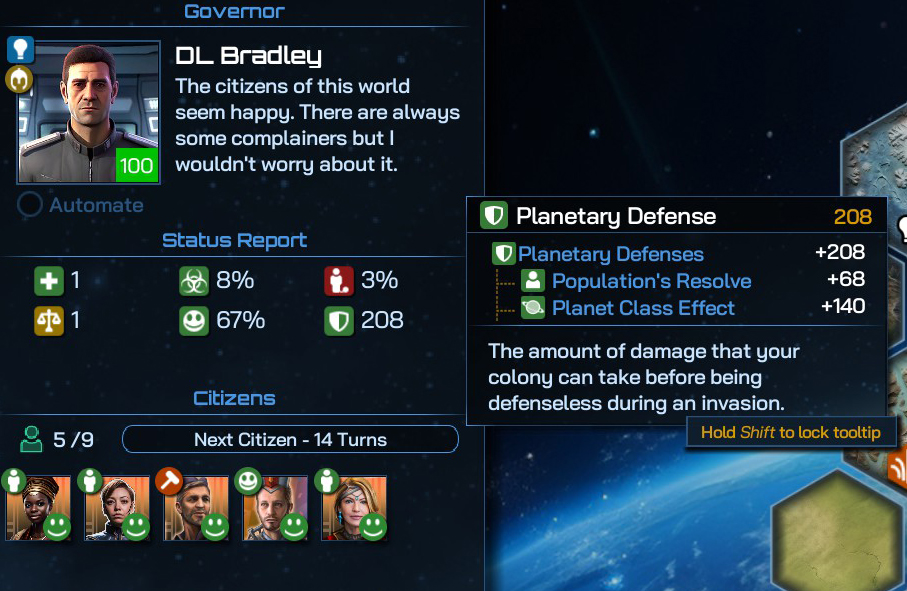
Planetary Defense is how long it will take for an enemy to conquer this planet if they lay siege. Enemy fleets have a conquest rating. That rating determines how much of your planetary defense they’ll destroy each turn. When it reaches 0, the planet is conquered.
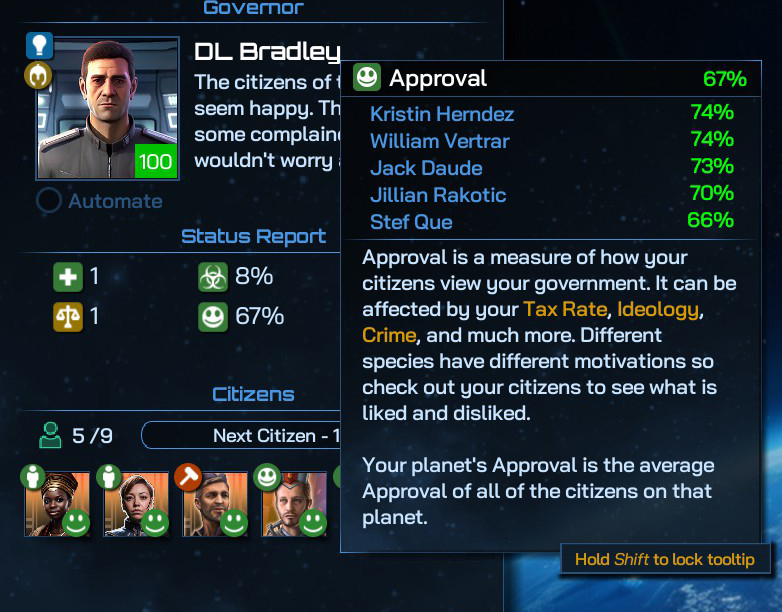
Approval is very important. It determines how effective your population is at working. Happy workers are productive workers which is why you should replace them with machines as soon as you can…
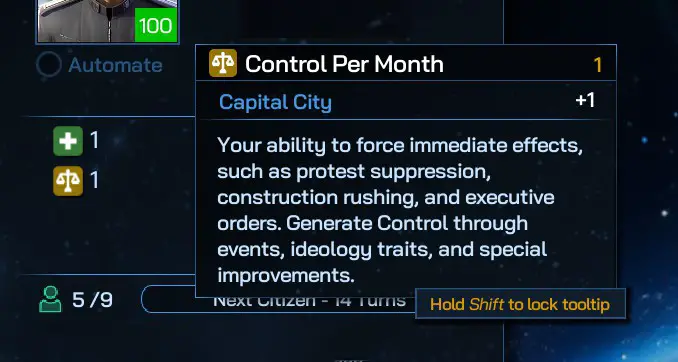
Control is what allows you to use those Executive Orders.
Citizens
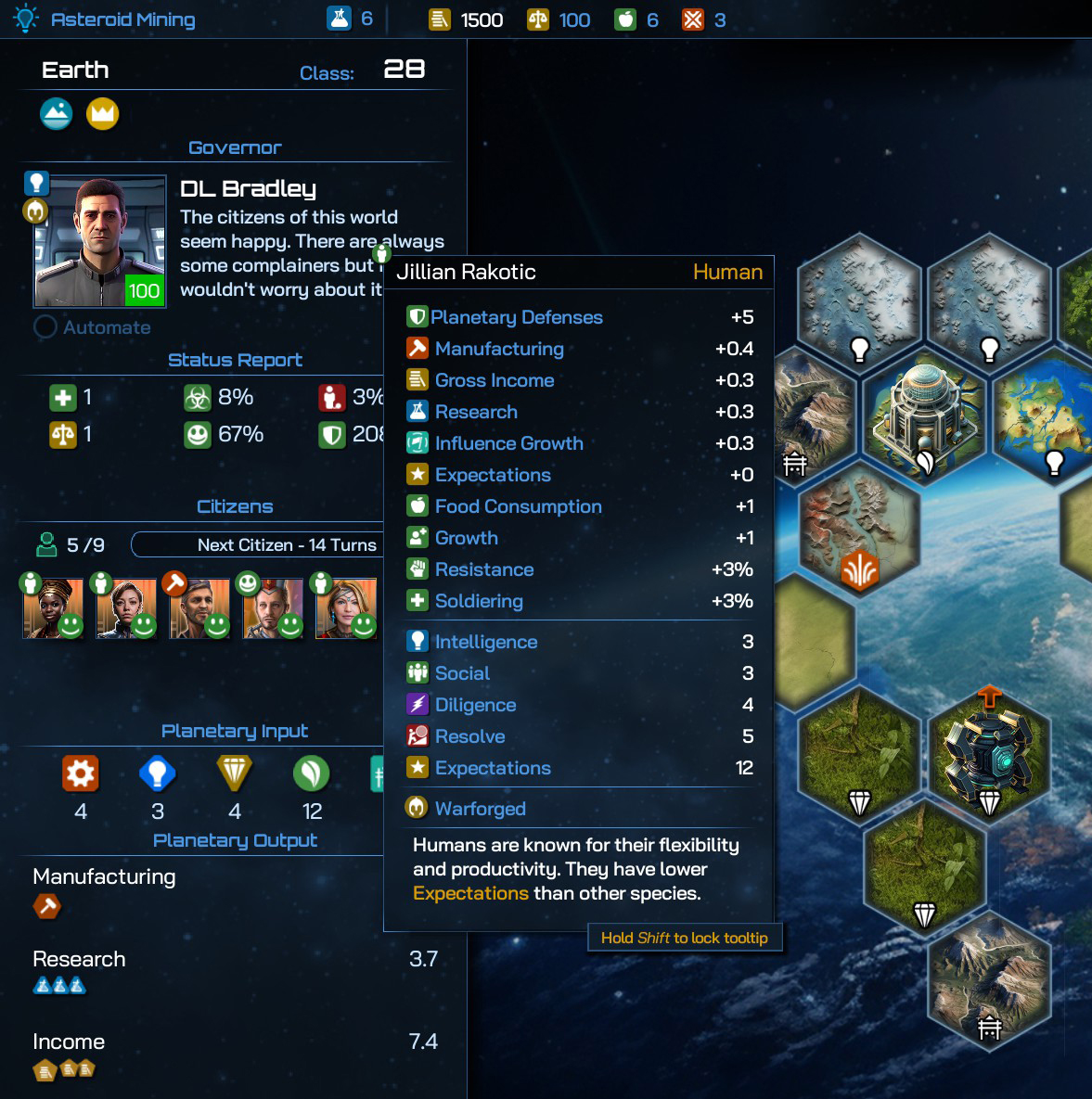
Citizens are what make a planet thrive. They are the ones who take the inputs (minerals, tech) and turn it into stuff your civilization can use. Your citizens have 4 stats that affect how well they do at these things. Different species have various strengths and weaknesses. Well, not humans. They’re pretty bland and are OK at everything.
Sometimes citizens will have a trait that can affect their performance. Warforged means they belong to a faction (factions are political parties but we at Stardock were too cowardly to call them political parties so we called them factions).
You can spend control to train them into a particular profession. This can boost how well they do in a particular area but at the cost of them not doing as much in another area.
Planets: Getting them going
One piece of advice I have is to get your production going as soon as possible.
Production buildings are typically brown in color. Put them on something that will boost them (don’t destroy them like this screenshot implies).
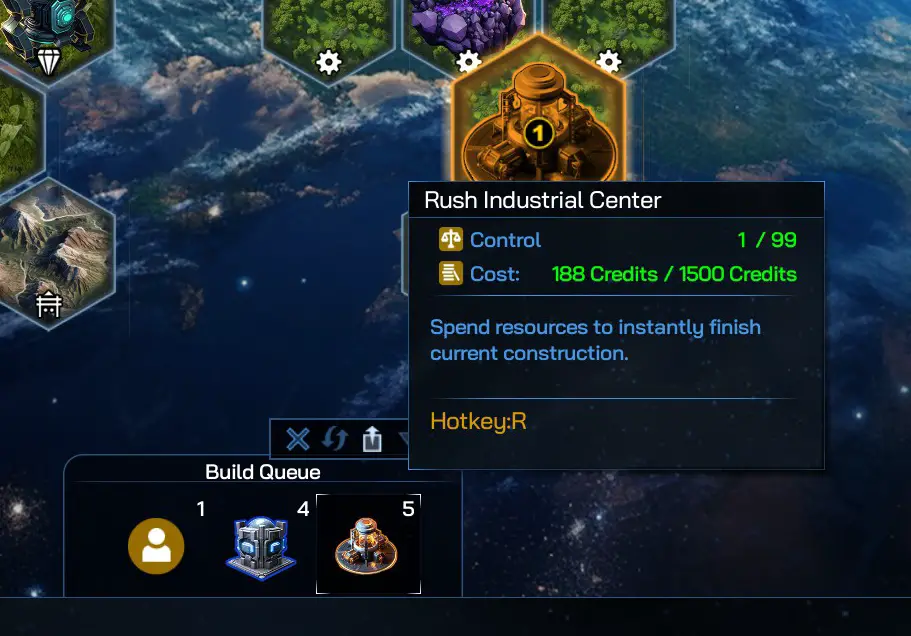
Then spend money to rush build the building.
Planets: Districts
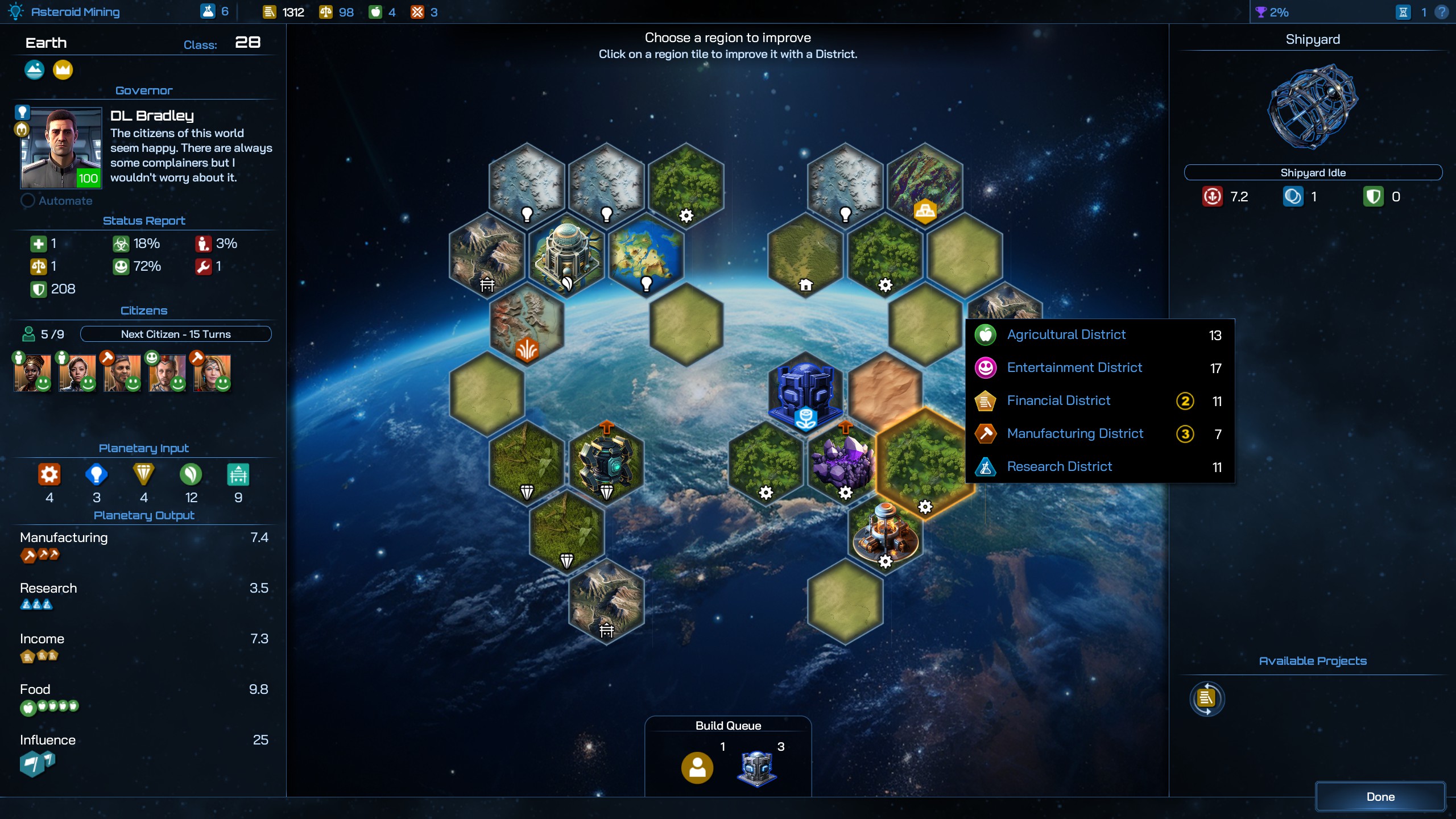
While the specialized planet improvements can be useful, your bread and butter are the easily (and often forgotten) districts. These are repeatable improvements that you can place anywhere you want.
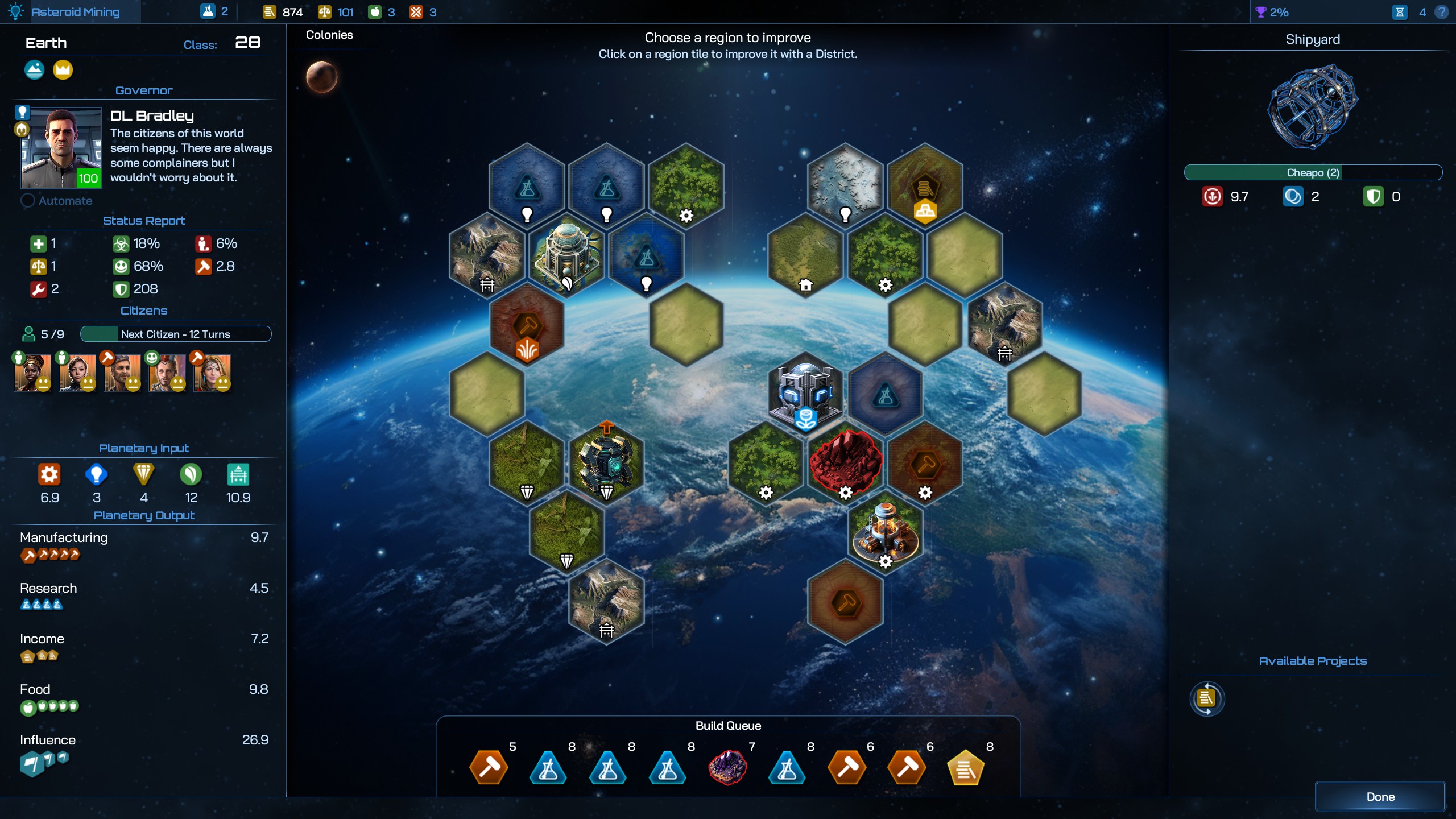
In fact, good and admittedly handsome players will queue up a bunch of districts.
Making Starships
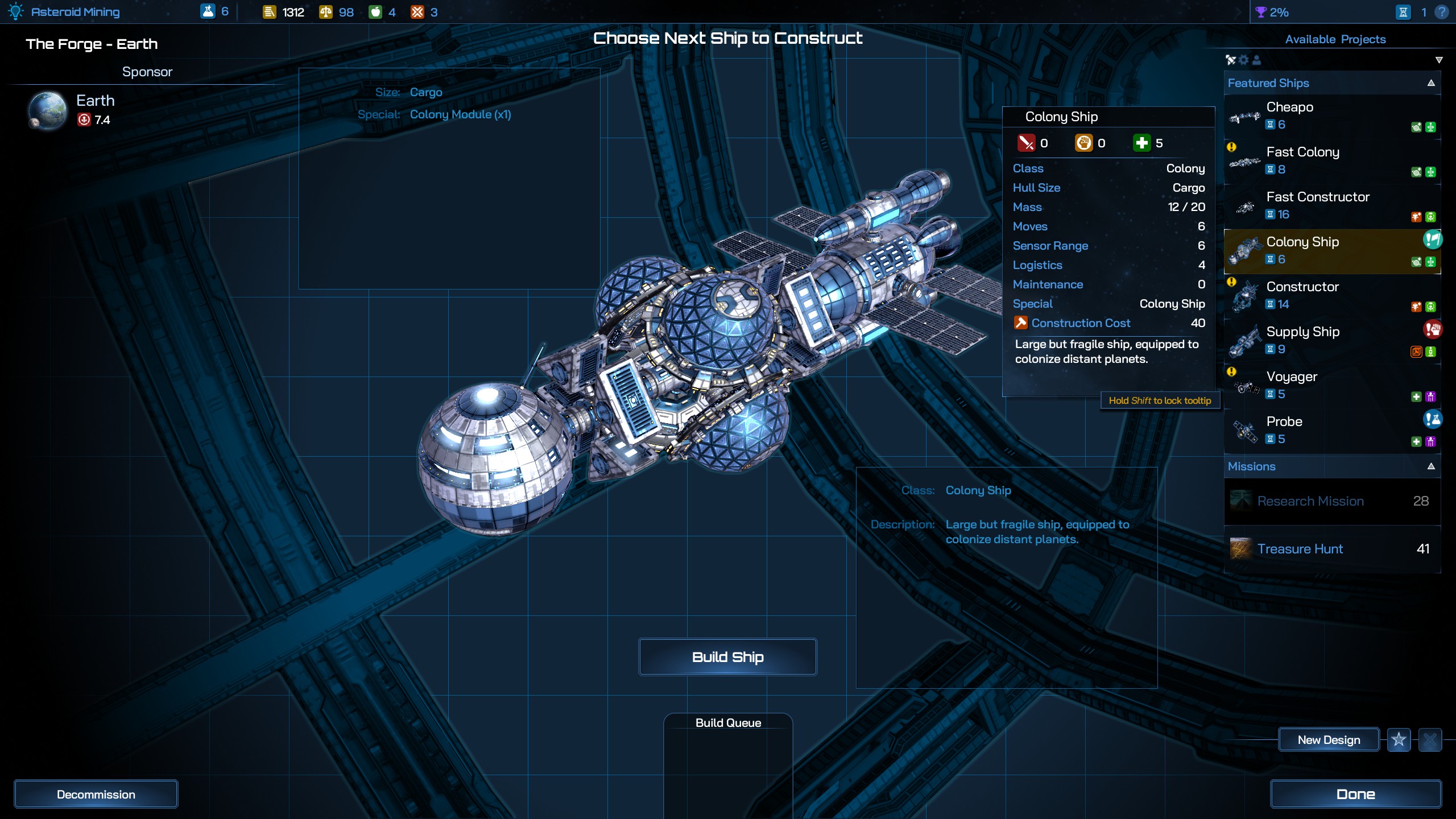
Double clicking on a shipyard will take you to fancy shipyard screen. You will want to build a Colony Ship right away.
You will probably want to rush build this if you plan on playing a wide game (i.e. have lots of planets).
Your first Colony
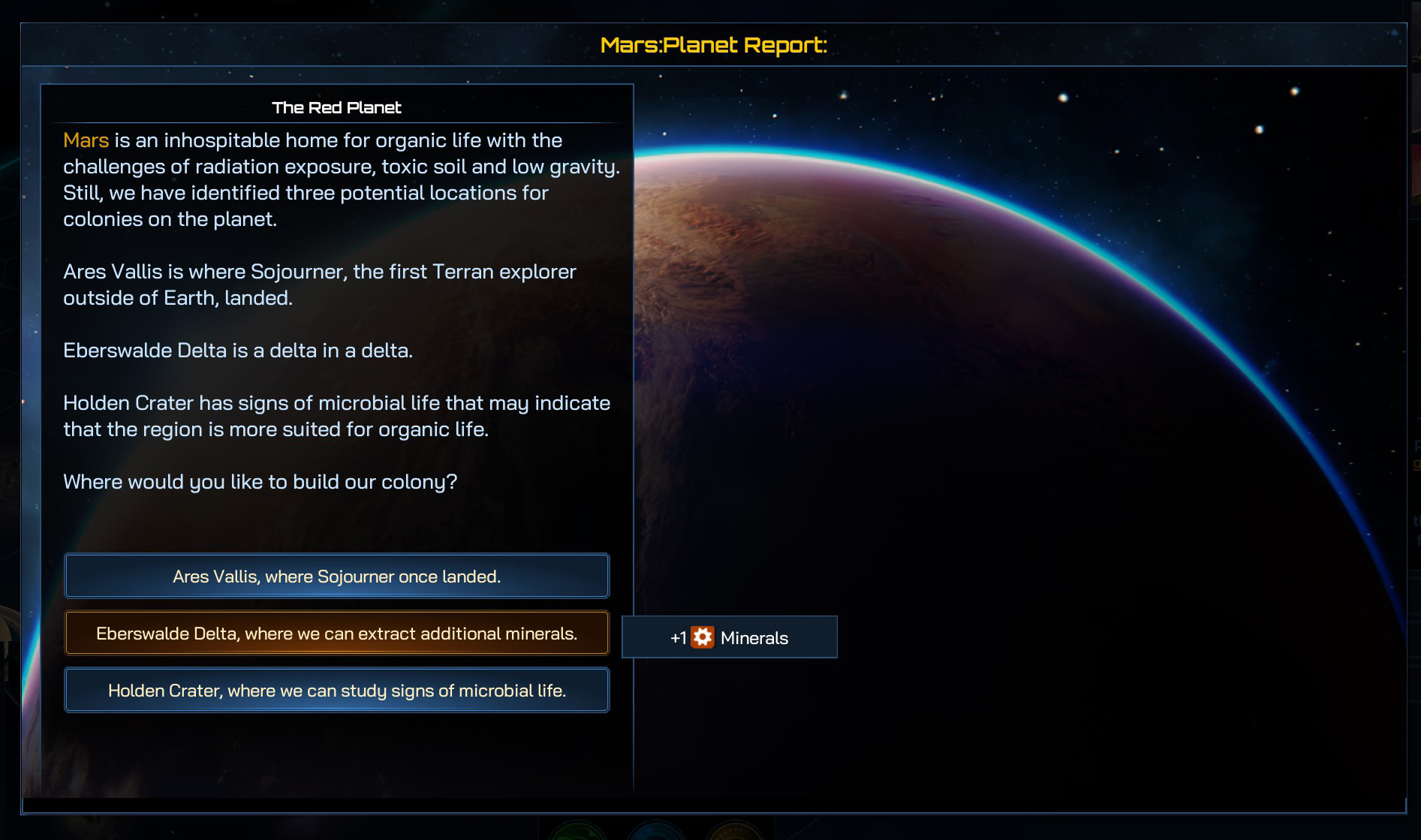
When you colonize a world, you will occasionally be given a choice on what you want to do. These choices can have consequences later.
Mars at this point is just a colony. Colonies provide their outputs to their nearest core world so they are worth getting. Just pay attention to how much they are producing.
Artifacts
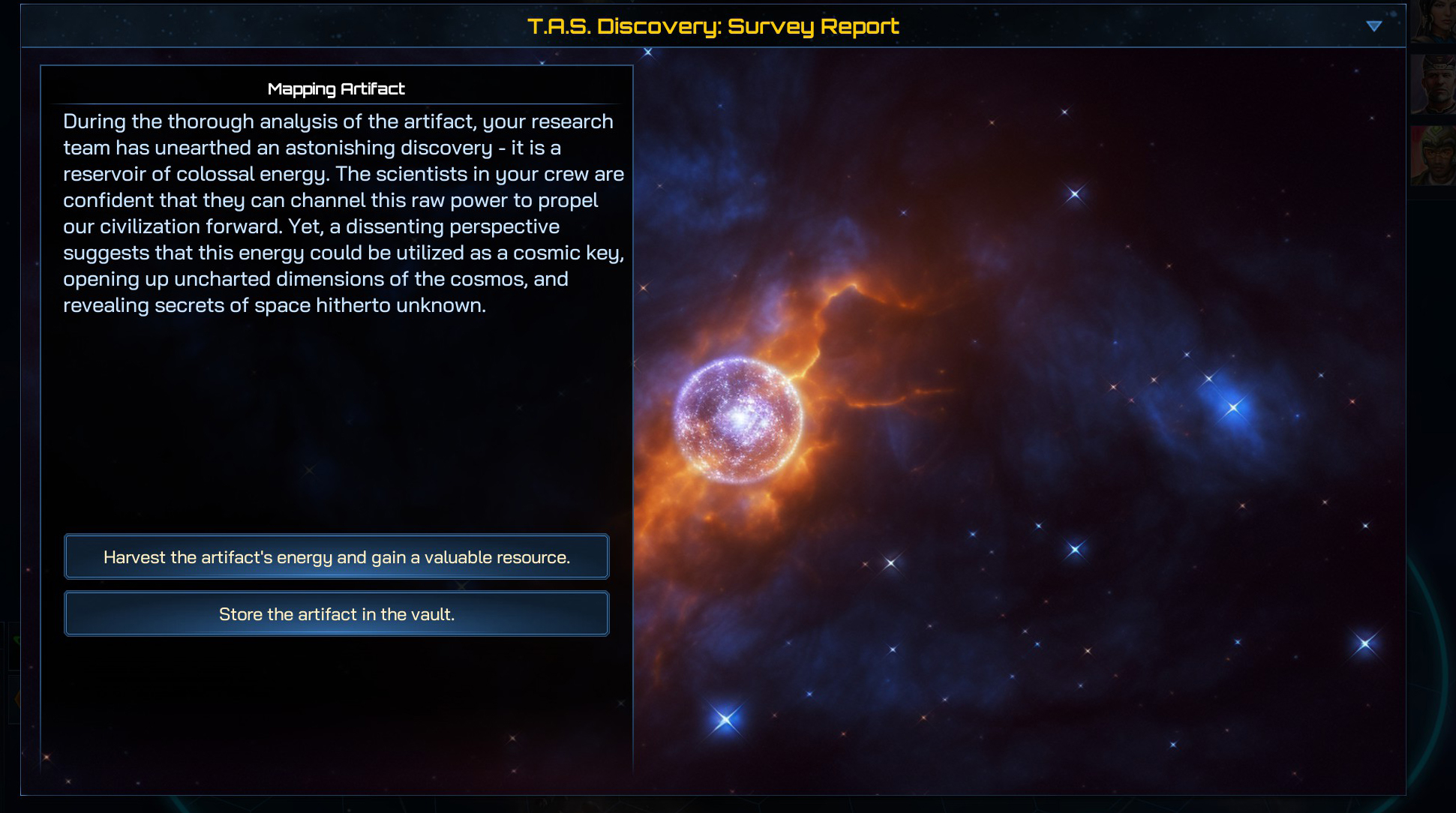
Your flag ship will report back on things it finds and result in you having some choices. In this example, it found an artifact.
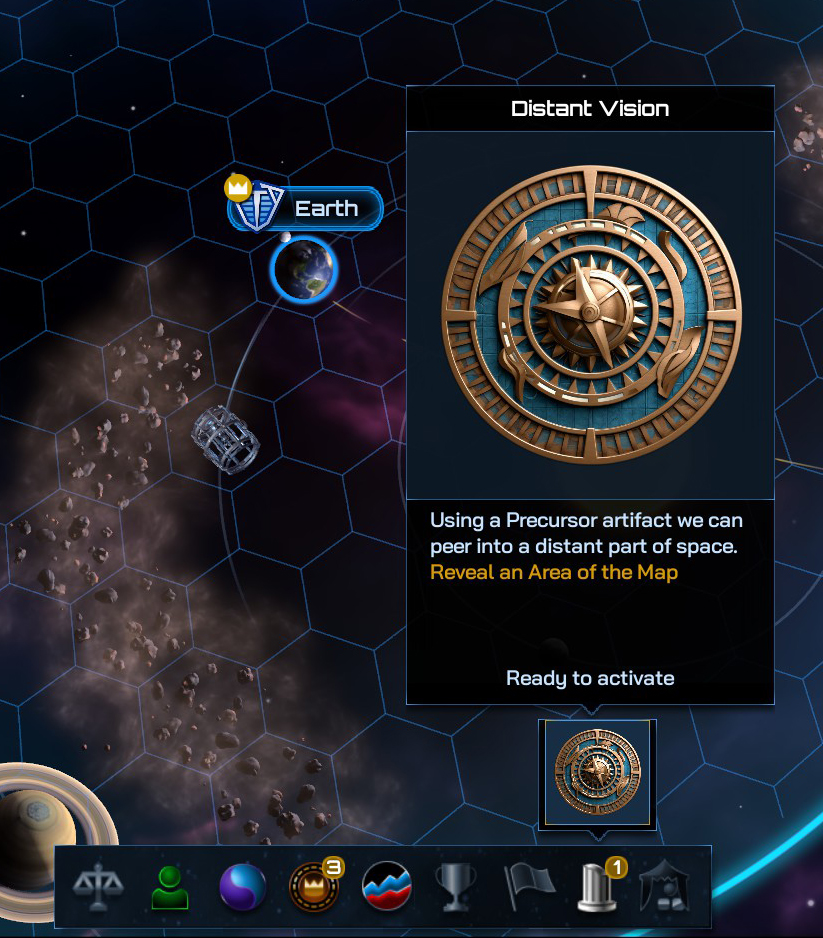
You can place the artifact in your vault to access later. I used this one to find a nice shiny planet in another star system…
Expanding to other star systems
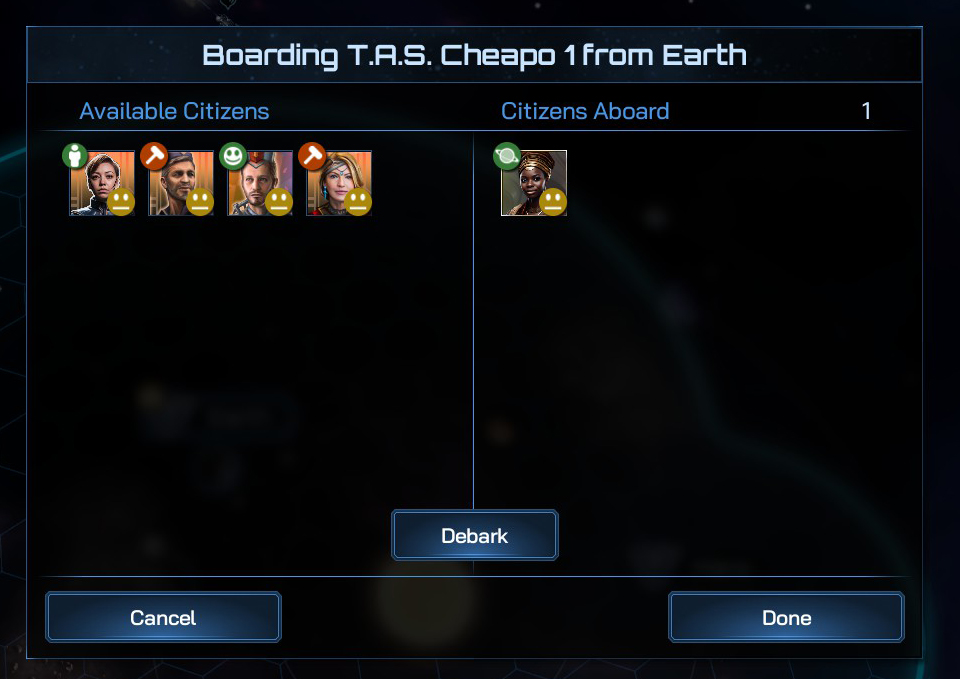
When it’s time to go to another planet, you will be asked to choose who is being given the honor to go to an alien world. There are a lot of different ways to choose. I typically choose the least happy person who isn’t specialized. Other people have other strategies on this. In this example, I chose a character with high stats because I’m sending them to a planet that will become a core world.
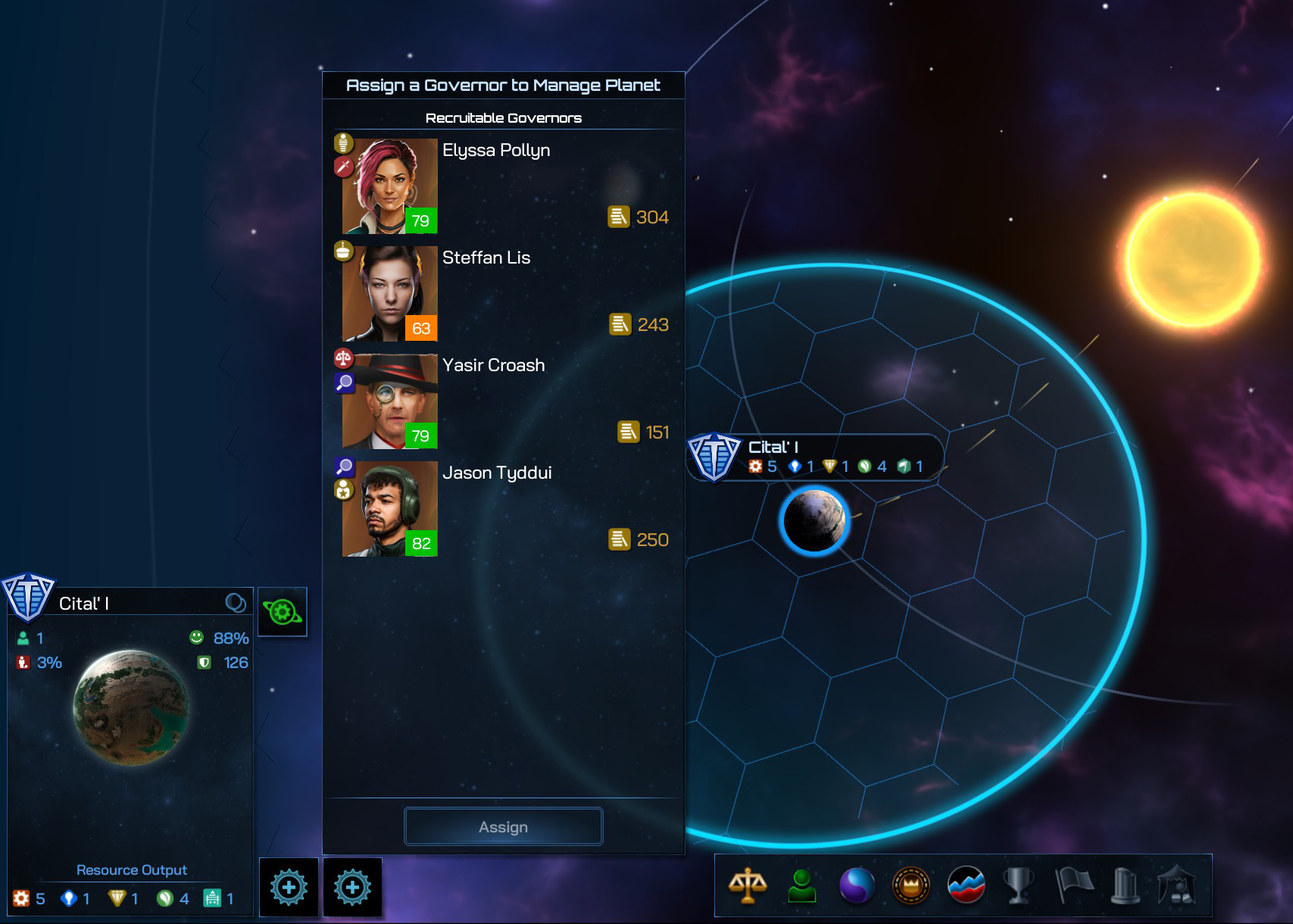
Once I have a high quality planet (the higher its class the better) I can turn it into a core world by assigning a governor to it. Now you can manage this world directly and it will gather resources from nearby colonies.
Aliens
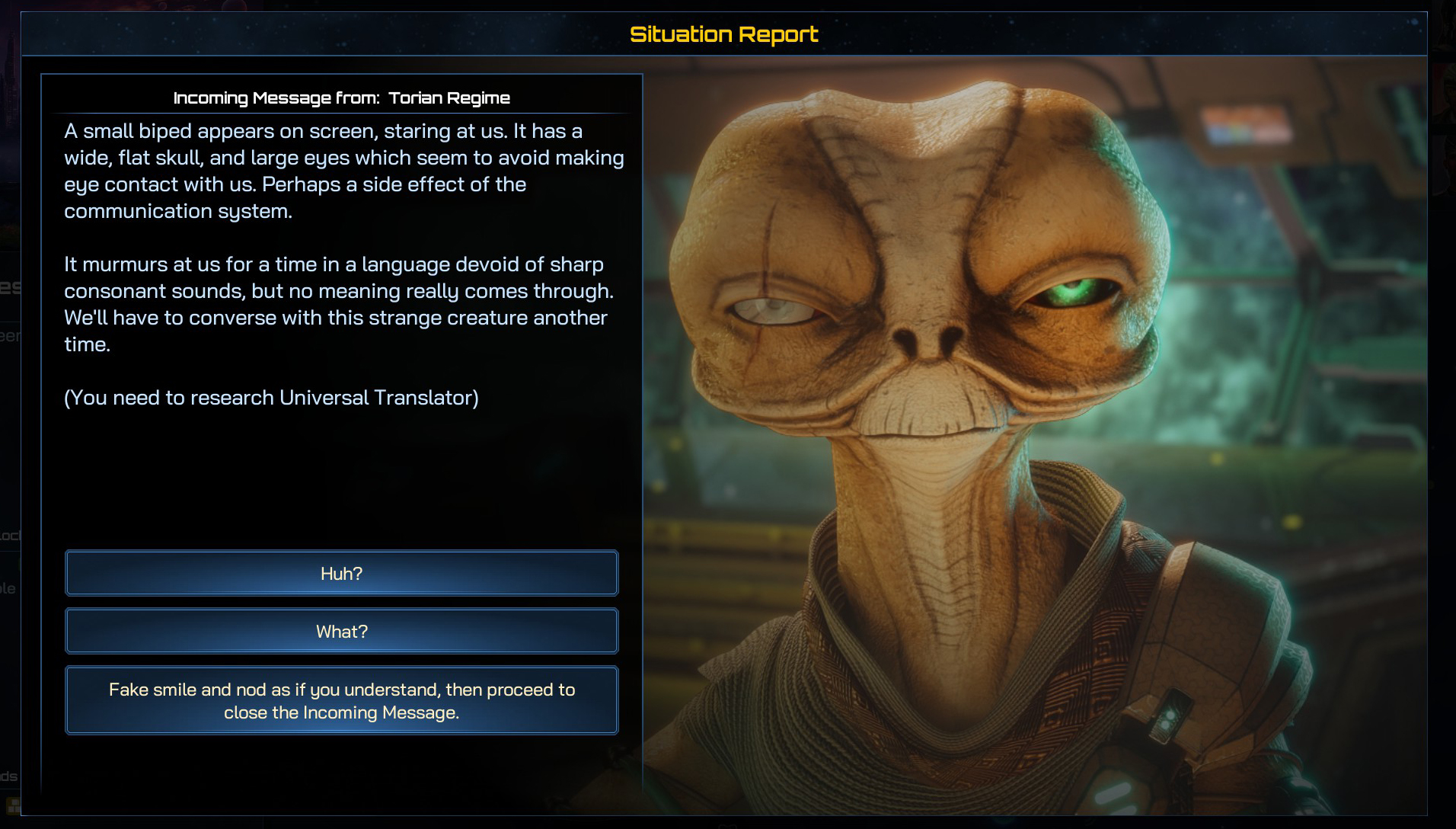
Eventually you will meet aliens. If neither of you have a Universal Translator (or if they just don’t want to use theirs with you) you will get this.
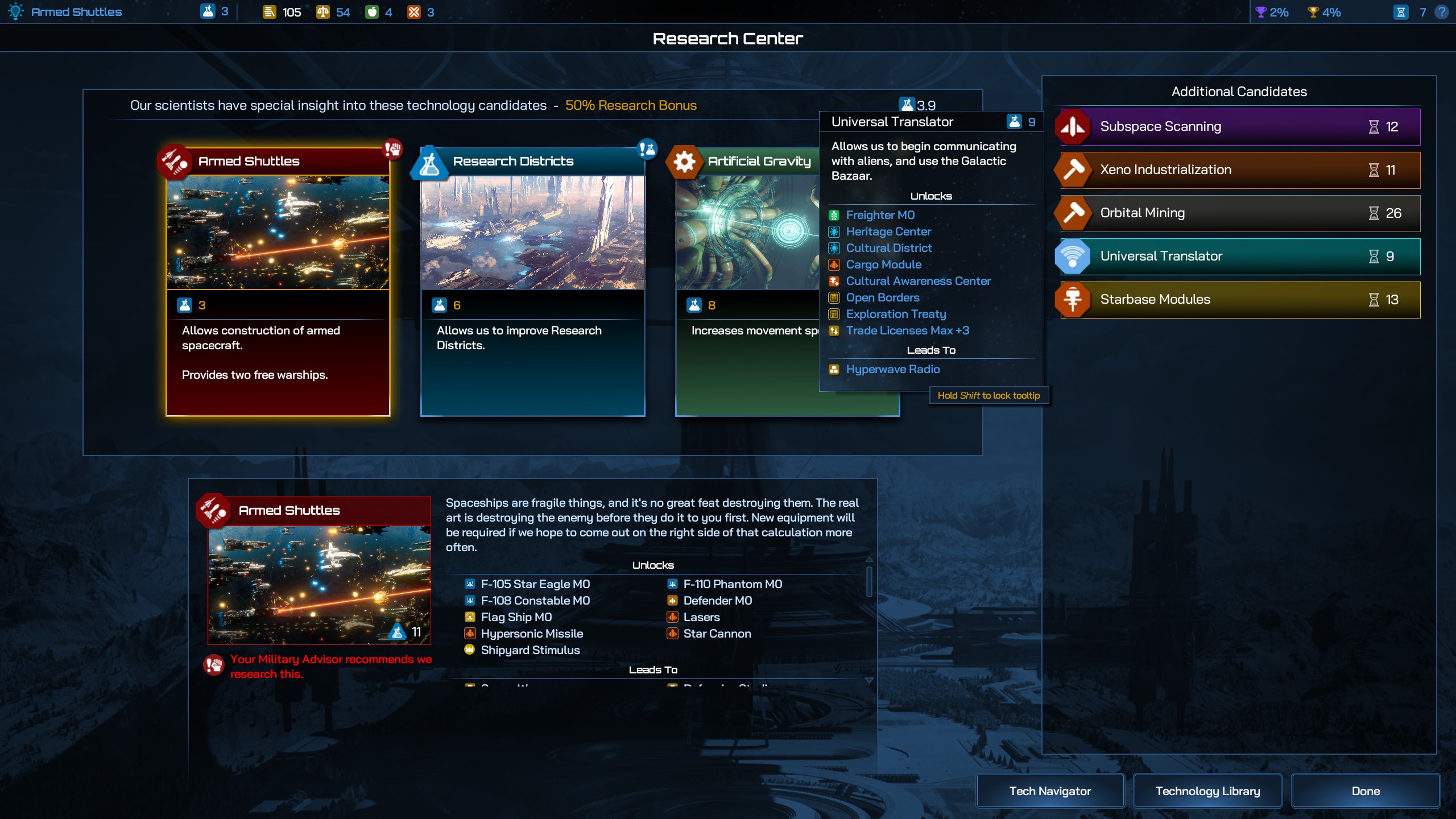
Researching Universal Translator tech is very important. It unlocks the Galactic Bazaar and gets trade moving.
Leaders
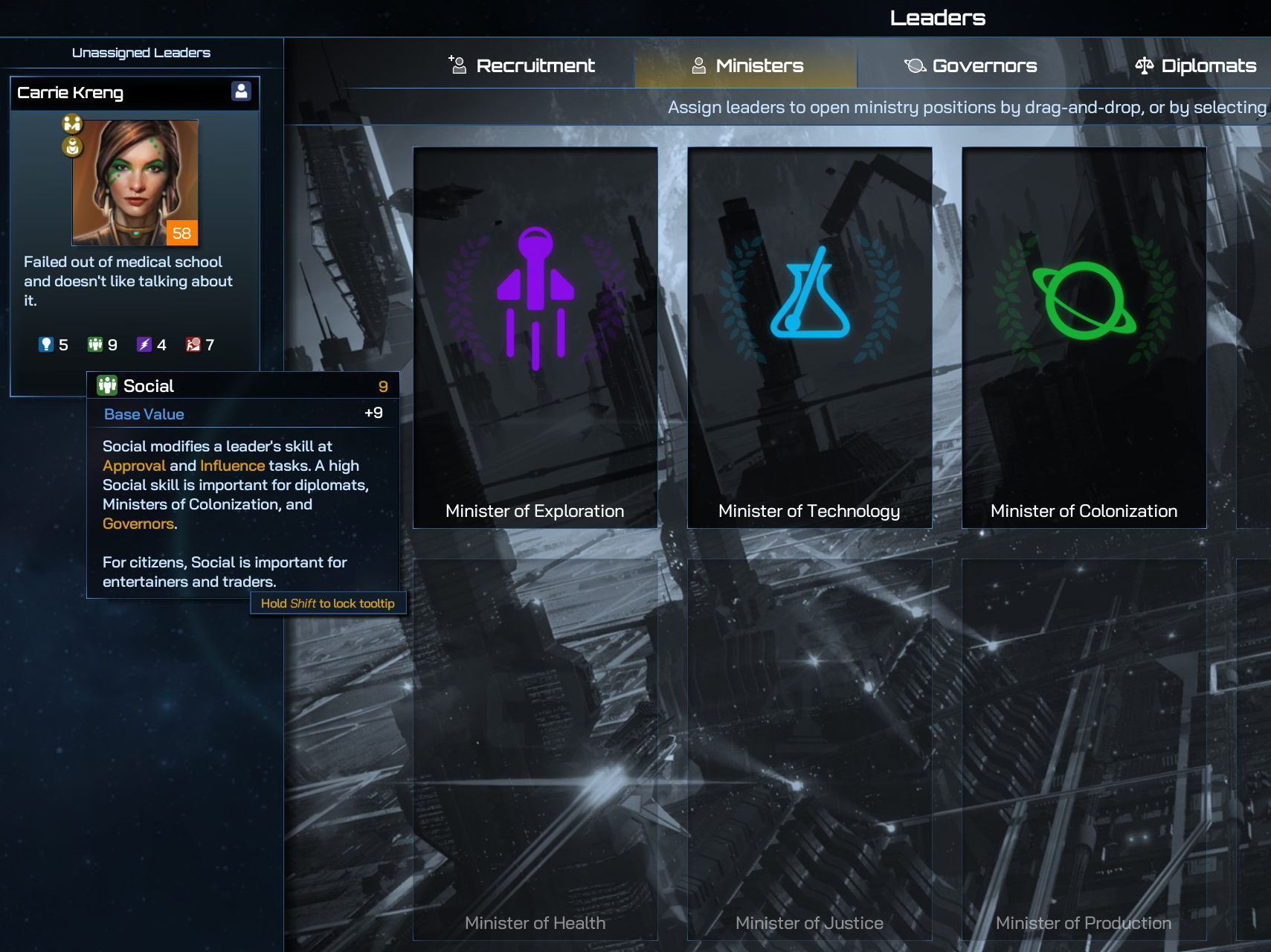
Leaders are citizens with a special trait (leader) that lets them be used anywhere. Their stats can be used to give your civilization buffs overall if you assignt hem. The stats are color-coded so you can see which stat matters for which job.
I almost always choose a Minister of Exploration first because it extends my ship range by their Diligence stat.
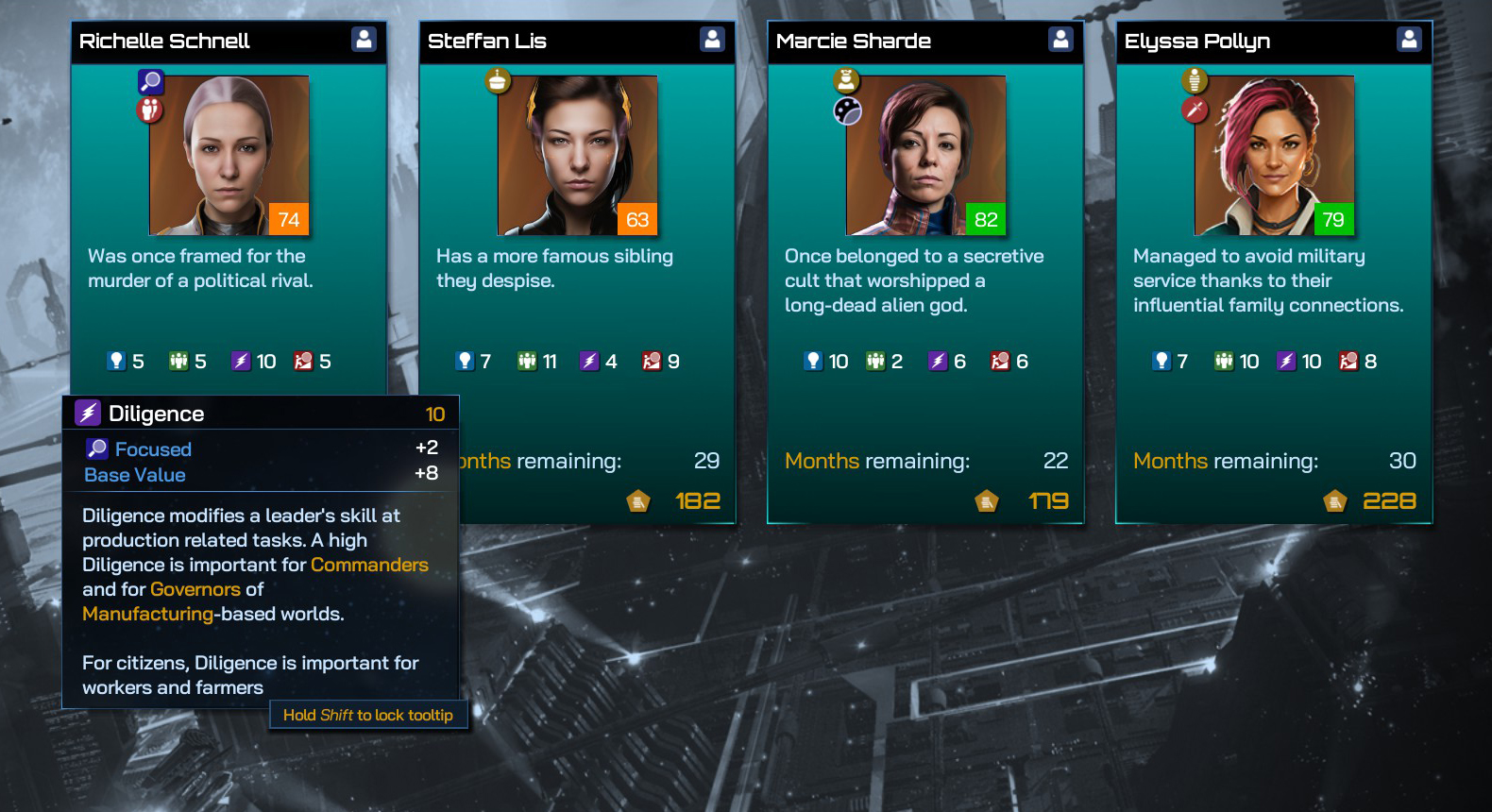
Leaders have a backstory that can sometimes trigger events later in the game that can have huge (or minor) consequences for the galaxy.
Orbitals
The orbitals button on planets lets you choose things to put into the orbit of your planet that provides some general benefit. Different types of planets have different numbers of orbital slots.
Getting Help
There is a very active Discord channel for GalCiv if you ever want to ask someone questions. This should be enough to get you started. Good luck!
